
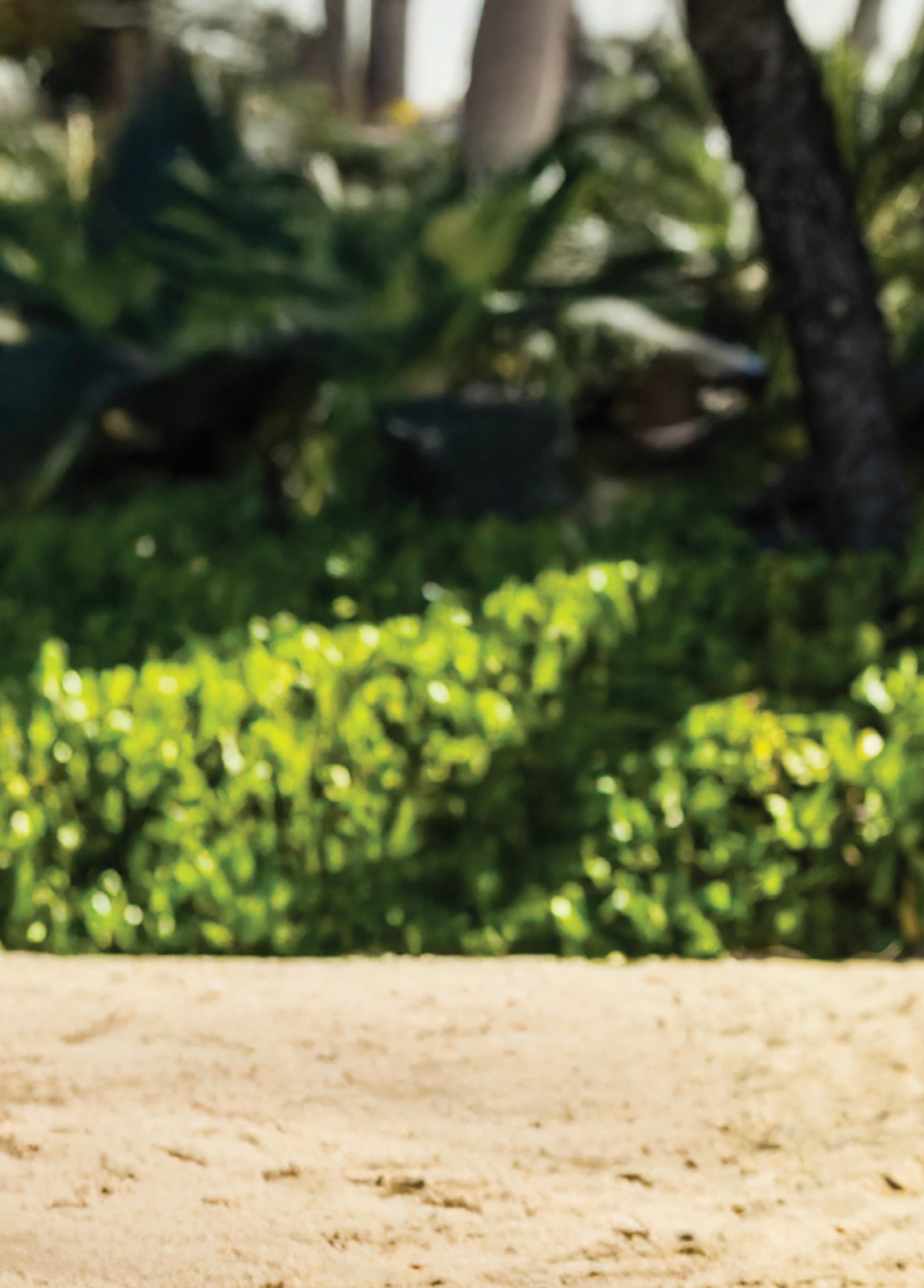
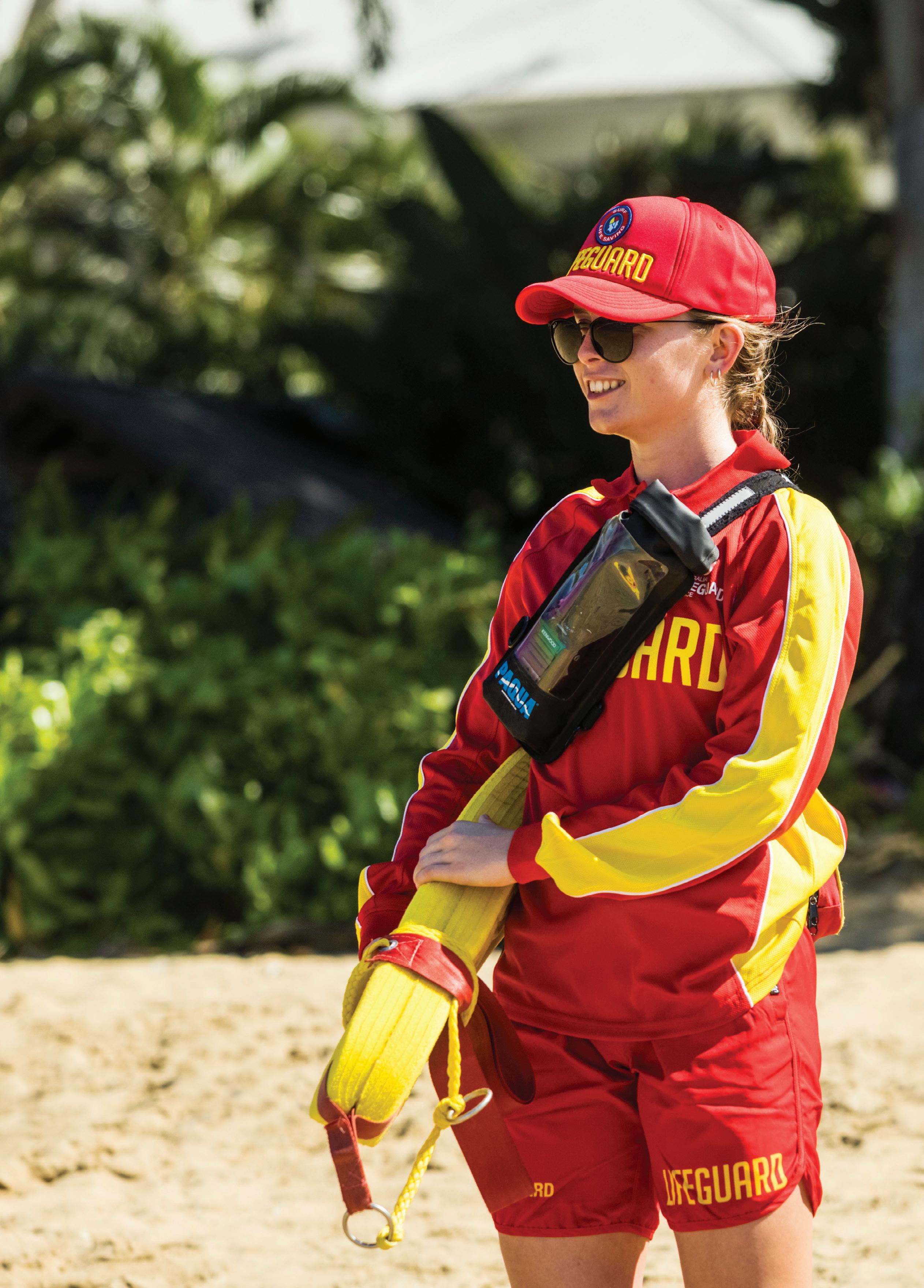
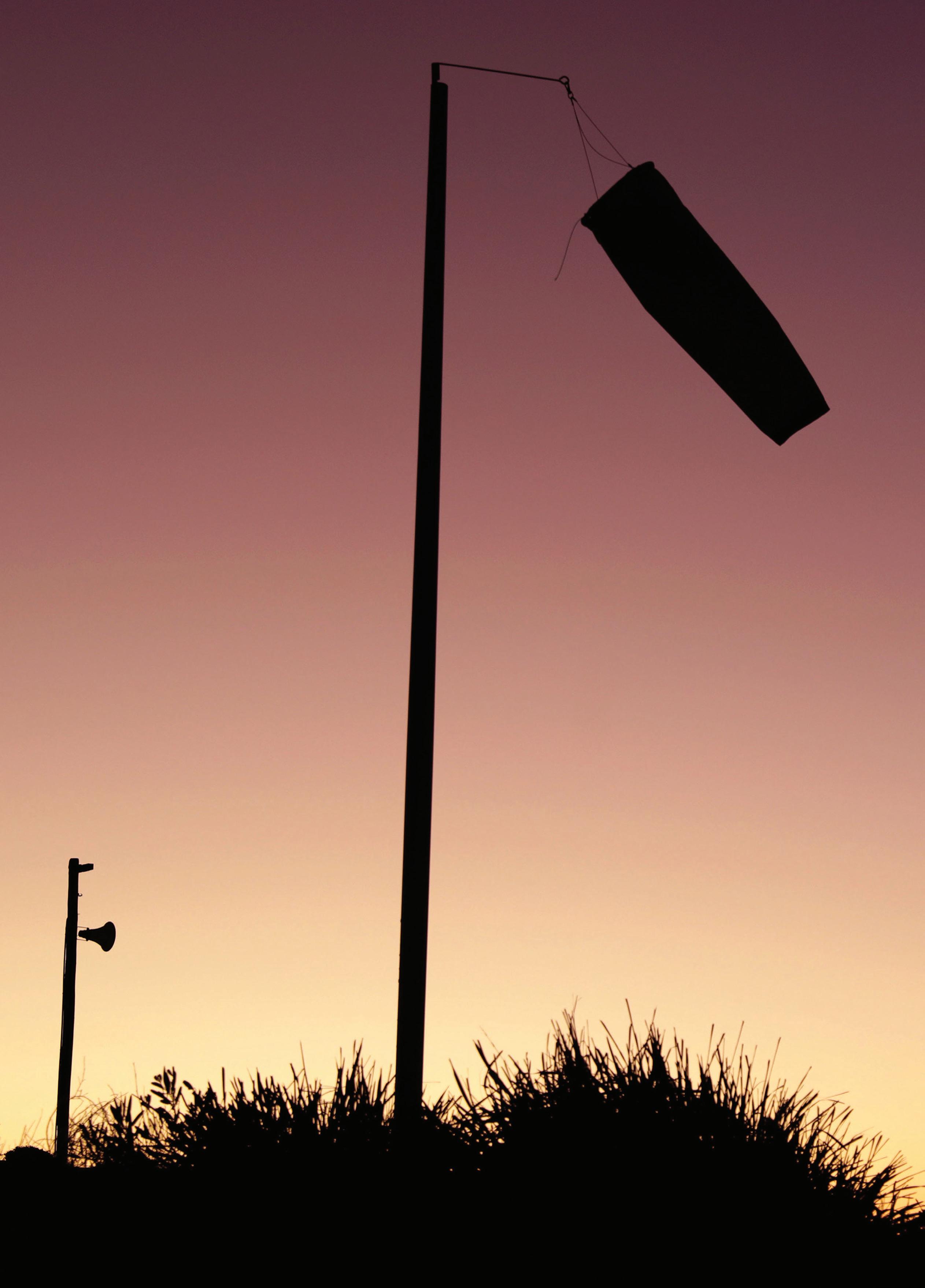







With nearly 32,000 km of coastline and over 12,000 beaches, Australia is home to some of the most breathtaking coastal landscapes in the world. Given that 87% of the population, more than 22 million people, live within an hour’s drive of the coast, a dedicated, professional lifeguard service is essential to ensuring beach safety.
The Australian Lifeguard Service (ALS) is a fully integrated national lifeguard provider, delivering expert services to more than 76 local government authorities and land managers across the country. Committed to proactive, professional, and community-focused beach safety, ALS plays a vital role in protecting both residents and visitors.
As the largest provider of paid lifeguards in the southern hemisphere, ALS employs over 1350 lifeguards across more than 240 beaches nationwide. It is the sole lifeguard service for coastal councils in Victoria, South Australia, and Tasmania, while also serving as the major provider in Queensland, Western Australia, and New South Wales.
From patrolling busy tourist hotspots, safeguarding
remote shorelines, and now expanding services to inland water ways, ALS remains at the forefront of coastal safety.
Providing lifeguard services is a complex operation that demands adherence to industry standards across public safety, training, development, and medical research.
For over 30 years, the Australian Lifeguard Service (ALS) has been a leader in aquatic safety, setting international benchmarks through nationally accredited training, highly skilled personnel, and rigorous operational standards.
With strong ties to Surf Life Saving Australia, the Australian Lifeguard Service (ALS) has a proud history of excellence in lifeguard services and public safety leadership, working closely with emergency services, Surf Life Saving support operations, and volunteer surf lifesavers nationwide to ensure a unified and effective safety network. Through a steadfast commitment to professionalism and innovation, ALS continues to set the standard for lifeguard services across Australia.
The Australian Lifeguard Service delivers value by avoiding duplication of assets and efficiently sharing resources with Surf Life Saving Club’s, ensuring costeffective operations while maximising public safety benefits. ALS lifeguards are equipped with specialised gear and trained to use it effectively in various conditions. Rescue boards and Rescue Watercraft (RWC) serve as primary lifesaving tools in aquatic environments, while Side-by-Side Vehicles (SSVs) and four-wheel drive enhance mobility for land-based patrols, ensuring rapid response and effective rescue operations.

2023/24: SURF LIFE SAVING
Over 2023/24, SLSA supported marine rescue services, with South Australia, 22 in Tasmania services around Australia, with Northern Territory, two in South
supported 565 services around Australia. There are 315 Surf Life Saving Clubs and seven affiliated services, with 129 in New South Wales, 58 in Queensland, 57 in Victoria, 31 in Western Australia, 22 in Tasmania and three in the Northern Territory. The Australian Lifeguard Service provides 243 lifeguard Australia, with 97 in New South Wales, 76 in Queensland, 42 in Victoria, 16 in Western Australia, eight in the in South Australia and two in Tasmania.

The Australian Lifeguard Service is a leader in professional lifeguarding, dedicated to protecting beachgoers and promoting water safety. With a legacy built on over a century of surf lifesaving expertise, ALS lifeguards provide proactive and professional services to local governments and land managers, across Australia.
Being an ALS lifeguard means more than just working on the beach it’s about making a meaningful impact. Lifeguards play a vital role in preventing incidents, performing rescues, administering first aid, and educating the public on beach safety. The job offers diverse opportunities, from seasonal and full-time employment to leadership development and career progression. Every day presents a new challenge, requiring physical fitness, quick decision-making, and teamwork in dynamic coastal environments.
ALS lifeguards undergo rigorous training to ensure they meet the highest standards in aquatic safety and emergency response. To learn more about the qualifications, training requirements, and application process, visit lifeguards.com.au/become-a-lifeguard.
The ALS is always seeking dedicated and passionate individuals to join its team. If you’re ready for a rewarding career that combines fitness, teamwork, and community service, visit the website to explore recruitment opportunities.
Make a difference become an ALS lifeguard and help keep Australia’s beaches safe!

“Lifeguarding gave me transferrable skills that helped me become a firefighter, another job that I thoroughly enjoy.”



BUILDING LIFEGUARD EXCELLENCE
The Australian Lifeguard Service (ALS) Beach
Operations Management (BOM) course is more than just a training program—it’s a journey that transforms dedicated lifeguards into confident leaders, ready to take control of critical incidents on the beach. Central to this program is the development of the key skills required to lead and manage beach emergencies as an ALS Incident Controller. Lifeguards learn how to coordinate responses, conduct thorough briefings and debriefings, ensure workplace health and safety (WHS) standards are met, and execute effective aquatic search and rescue operations—all in alignment with the National Search and Rescue Manual.
The path to completing this course is not just about ticking off units of competency—it’s about rising to the challenge. Lifeguards embarking on this journey must meet a set of prerequisites that ensure they have the foundational skills to succeed:
• Be at least 17 years old at the time of assessment
• Hold a proficient Bronze Medallion
• Be proficient in First Aid
• Hold a proficient Advanced resuscitation training (ART) certification
• Have completed the PUA20119 Certificate II in Public Safety (Aquatic Rescue)
• HLTAID011 Provide First Aid
• HLTAID015 Provide advanced resuscitation and oxygen therapy
The learning experience is a blend of flexibility and hands-on practice. Lifeguards begin with self-paced online modules, giving them the freedom to study at their convenience while ensuring they build a strong theoretical foundation.
The ALS BOM course includes the following key units of competency:
PUAOPE012
Control a level one incident
PUAOPE015
Conduct briefings and debriefings
PUASAR011
Search as a member of an aquatic search team
PUAWHS002
Maintain safety at an incident scene
These units contribute to the nationally recognized PUA30322 Certificate III in Public Safety (Aquatic Search and Rescue), a vital qualification that enhances a lifeguard’s career and professional development.
However, the real test comes in the face-to-face training sessions. Here, lifeguards step out of the virtual world and into real-world scenarios, where they reinforce their learning, tackle new challenges, and put their skills to the test in simulated emergency situations. These sessions mirror the unpredictability of beach incidents, demanding quick thinking, teamwork, and stay composed under pressure
This course is for those ready to embrace a challenge. It pushes lifeguards both physically and mentally, preparing them for the high-pressure environments they will inevitably face. The demands are tough, but the rewards are greater—a sense of accomplishment, the ability to lead and protect, and the knowledge that they are prepared to manage critical incidents.


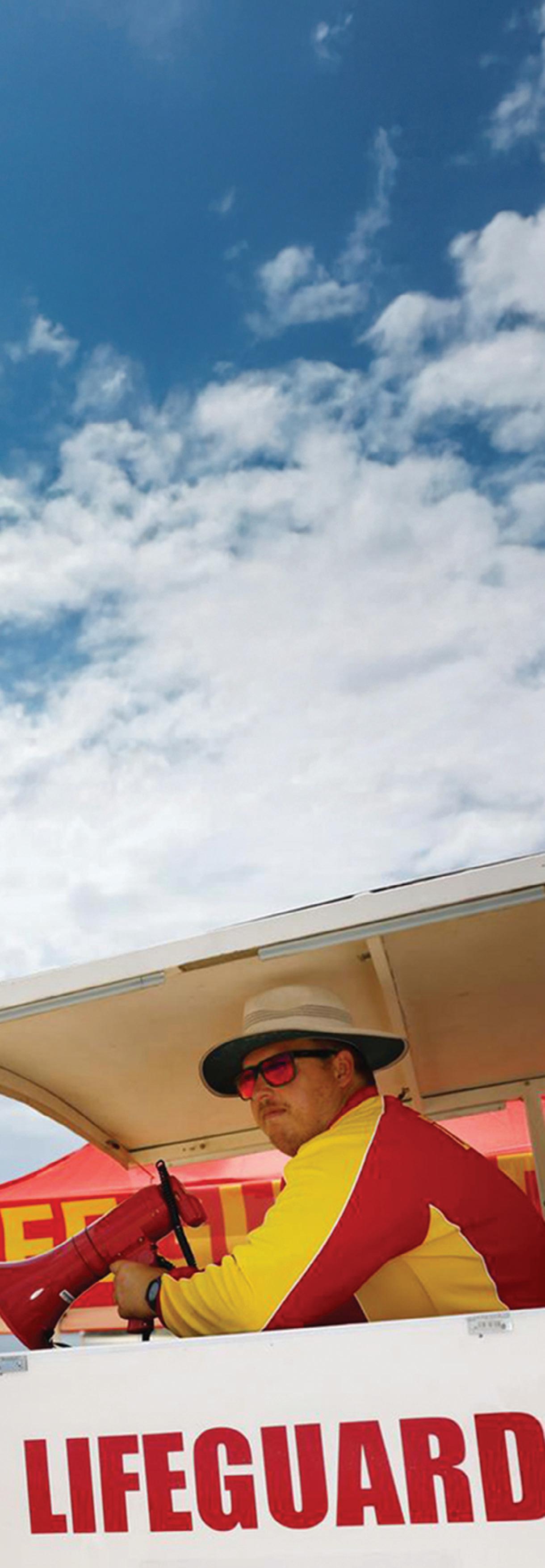
Inland waterways such as Lake Parramatta and Penrith Beach in NSW have become increasingly popular destinations for families, swimmers, and water sports enthusiasts. These locations offer a more controlled and accessible alternative to coastal beaches, attracting a diverse range of visitors looking to cool off, exercise, or simply enjoy nature.
However, while these environments may seem safer than ocean beaches, they come with their own unique risks. Drownings and water-related incidents continue to occur in lakes and rivers due to factors such as hidden hazards and unpredictable water conditions.
Some key challenges that the ALS team has had to overcome include:
• Submerged objects and uneven depths
• Water quality and visibility issues
• Temperature changes and cold shock
• High visitor numbers and unsupervised areas
• Limited swimming skills and water safety knowledge
To address these challenges, lifeguards at these locations undergo specialised site specific inductions and training that include inland water rescue techniques, first aid response for drowning and injuries, and public education strategies to raise awareness of hidden risks.
Alongside Parramatta City Council, the ALS have been providing lifeguard services at Lake Parramatta dating back to 2017. Whilst this has traditionally been a non-flagged service that focuses on the surveillance of a designated swimming area, the ALS were able to raise the iconic red and yellow flags for the first time during the 2024-25 patrol season thanks to some major capital works undertaken by Council to the swimming area. Lifeguards now promote the same safety messaging as that of coastal lifeguards – swim between the red and yellow flags. By replicating a coastal environment, lifeguards can educate the public and impart safety messaging that will remain relevant when swimmers visit coastal locations.
Lifeguard patrols are provided at Lake Parramatta between October and March, with full-time services provided over peak summer periods. To date, lifeguards have performed 102 rescues of swimmers, 63 first aids, and conducted over 7,000 preventative actions. Lifeguards have recorded nearly 55,000 visitors at the Lake for the season, which surpasses previous season figures and shows both the popularity of the location as well as the importance of lifeguard services.
Further inland at Penrith Beach, the ALS team are for the first time providing full-time services on behalf of the Department of Planning, Housing and Infrastructure this season. Penrith Beach, which is only in its second year of operation, is a unique environment that sits at the foot of the Blue Mountains and provides a fantastic swimming location for Western Sydney. Similar to Lake Parramatta, lifeguards put up the red and yellow flags each day and replicate coastal beach locations each day throughout the season. Lifeguards even have a Rescue Watercraft on standby which has proven invaluable throughout the course of the season by providing quick response to patrons on flotation devices and boards who have frequently found themselves in trouble or on the other side of the lake.
Since opening in December, lifeguards at Penrith Beach have performed 77 rescues, over 5,600 preventative actions and recorded over 52,000 beachgoers.
Importantly, at both locations, lifeguards support and deliver key safety campaigns and education days for visitors. Alongside the Community Education teams from both Surf Life Saving NSW and Royal Life Saving NSW, key safety campaigns, including the SLSA National Water Safety Campaign are promoted and delivered.
As more people seek out inland waterways like Lake Parramatta and Penrith Beach for recreation, the demand for professional lifeguard services is growing. Ensuring safety in these areas requires not only a well-trained lifeguard presence but also ongoing advancements in rescue techniques, public education, and infrastructure improvements.
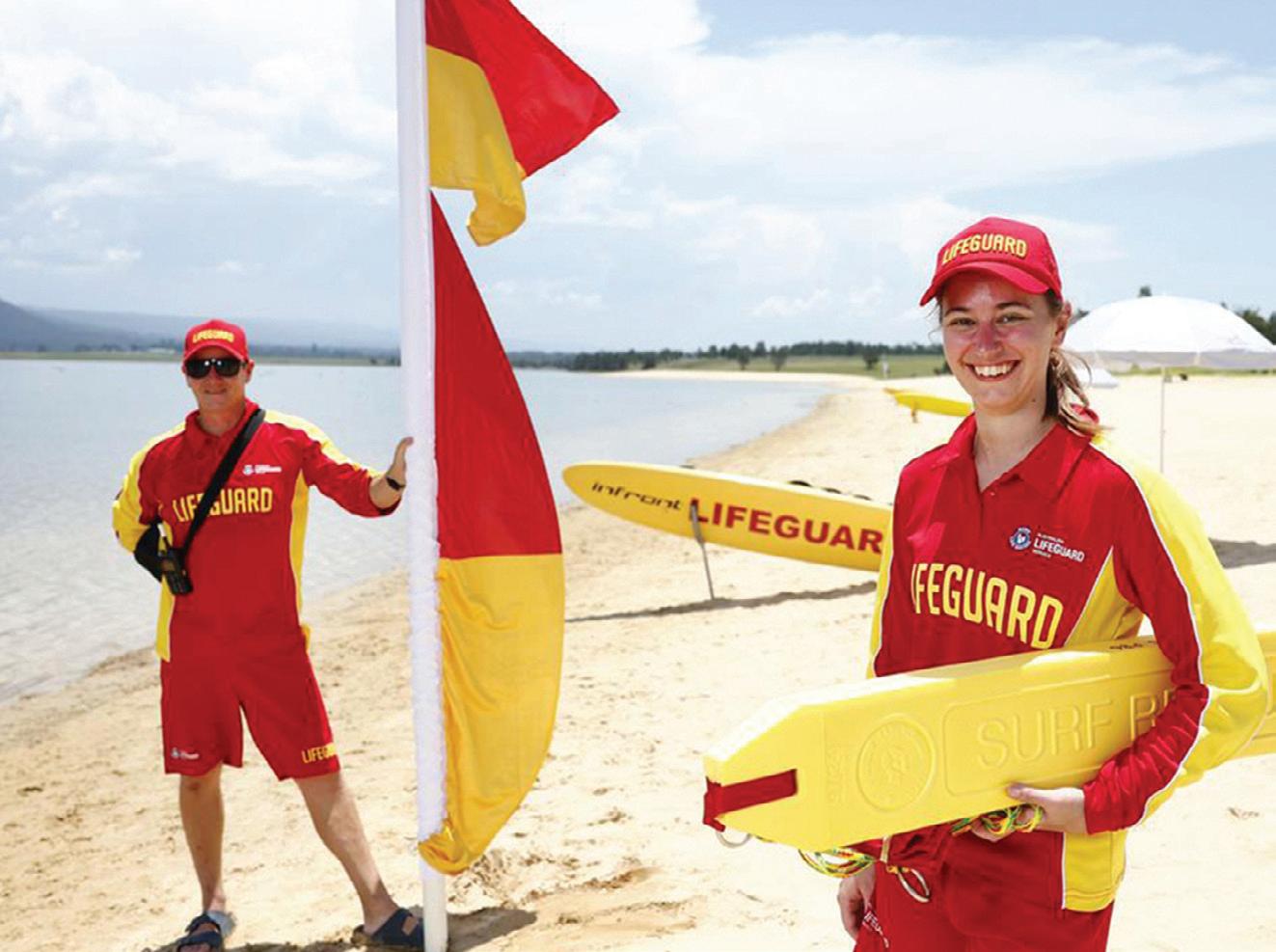
Investments in safety infrastructure can also play a significant role in preventing incidents. This includes better signage highlighting hidden hazards, additional emergency call stations, and clearly marked swimming zones. Upgraded rescue equipment, such as strategically placed rescue tubes and automated external defibrillators (AEDs), as well as Emergency Response Beacons (ERB’s) can further improve response times in emergencies.
The role of professional lifeguard services at inland waterways cannot be overstated. At locations like Parramatta Lake and Penrith Beach, lifeguards do more than just respond to emergencies—they actively prevent them through vigilant monitoring, rapid intervention, and public education.

As the popularity of these locations continues to grow, so too does the responsibility to maintain high safety standards. Working alongside land managers, investment in lifeguard training, safety infrastructure, and technological innovations will be crucial in keeping visitors safe while they enjoy these beautiful waterways.


Dr Jaz Lawes (SLSA), Dr Amandine Schaeffer (UNSW Sydney), and
Professor Angel Yanagihara (University of Hawaii)
Australian coastal waters are home to various marine stingers, some of which can pose significant risks to beachgoers. Previous research from the National Coastal Safety Survey (NCSR2020), reported 17% of Australian residents have been previously stung by a marine stinger, with the majority of beachgoer stings occurring along the eastern coast of Australia. Bluebottles were responsible for 68% of these reported marine stings, followed blubbers (9%) and Irukandji jellyfish (5%).
Since 2013/14, 374,796 marine stings have been treated by ALS and SLS services, equating to an average of 34,072 stings treated annually (Figure 1). However, previous research from the National Coastal Safety Survey revealed lifesaving personnel only treat 44% of stings reported within the community, meaning actual sting numbers are likely to be much higher.
Most jellyfish stings are relatively harmless, while others can be extremely painful or lethal.
Understanding jellyfish ecology, behaviours, and prevalence throughout the year can help lifesaving personnel appropriately allocate resources, mitigate risk, and enhance beachgoer protection.
Surf Life Saving organisations have been collaborating with researchers to explore different components of marine stinger risk mitigation. BluebottleWatch is a project to develop a predictive tool to inform
beachgoers about the likelihood of encountering a bluebottle, while another practical project aims to advance sting management and effective treatment protocols for deadly box jellyfish stings. Both of these research projects play a crucial role in raising awareness and educating the community about marine stinger risks but also strive for best practice in safeguarding beachgoers and members.
SLSA, in partnership with UNSW Sydney and other collaborators, established the BluebottleWatch project to shed insights into the biology, dynamics, pathways, and distribution of bluebottles to develop a daily likelihood tool predicting bluebottle occurrence at Australian beaches.
The multidisciplinary project uses an innovative combination of laboratory work, ocean surveys, statistical and hydrodynamic modelling to fill knowledge gaps on bluebottle behaviour, ecology, and movements. Recent information can be found here: https://news.unsw.edu.au/en/escaping-the-summertime-blueys. Bluebottle observations and sting data were used to quantify the geographical distribution of bluebottles and their variability over time. By linking these observations to relative measurements of winds, ocean currents and waves, this project is working towards the development of the first statistical machine learning model of bluebottle beaching to inform beachgoers and assist lifesaving services to prepare for days of heightened risk.
A recent BluebottleWatch team workshop fostered collaborative thinking, discussed challenges, reviewed progress, and explored opportunities to promote findings. Key BluebottleWatch updates and actions include:
1. In NSW, there are two main seasonal peaks of bluebottles: in spring (around October) and late summer (around February; Figure 2).
BeachWatch 2004-2010 (Sydney only)
BeachWatch 2011-2022
BeachWatch 2011-2022 (Sydney only)
2. Not all bluebottles are the same! Recent genetic research of BluebottleWatch samples revealed two main bluebottle species found along the coast of Australia: Physalia utriculus and Physalia megalista (Church et al. 2024).
3. Bluebottles are primarily moved by currents in the open ocean but pushed by winds to the coast. On the East coast of Australia, they are usually found after Northeasterly or Southerly winds, coming from the Southwest Pacific Ocean.

As this project reaches its final phase, the team explores the use of AI and machine learning to enhance the accuracy of the probabilistic model in preparation for predictive modelling.
Church, S. H., Abedon, R. B., Ahuja, N., Anthony, C. J., Ramirez, D. A., Rojas, L. M., ... & Dunn, C. W. (2024). Global genomics of the man-o’-war (Physalia) reveals biodiversity at the ocean surface. bioRxiv, 2024-07.

The Australian Box jellyfish is considered one of the most venomous organisms in the world. They are prevalent during the warmer months along northern Australian coastlines, posing a significant risk to tropical beachgoers. In response, Surf Life Saving Australia, Surf Life Saving Northern Territory, Surf Life Saving Queensland, Surf Life Saving New South Wales and researchers from James Cook University and the University of Hawaii, have collaborated to advance sting management and effective treatment protocols, seeking to improve public safety and reduce preventable fatalities from tropical marine stings.
Sting management practices for life threatening box jellyfish are currently a contentious topic for risk managers, with current envenomation first aid guidelines being challenged or misinterpreted. This lack of clarity has promoted misinformation relating to these rare, but potentially lethal stings. Clarification of the national jellyfish first aid guidelines are crucial to improve consistency and effectiveness of tropical marine sting management.
The multidisciplinary expert team conducted preliminary investigations into immediate first aid responses of Australian box jellyfish (Chironex fleckeri) envenomation in Darwin in January to assess the effectiveness of vinegar, hot water, saltwater,
heat packs, and ice in stopping sting impacts from worsening. Future research is planned to clarify optimal sting management practices, safeguarding beachgoers, and patrolling members in high-risk areas, ultimately working towards the national aim of zero preventable deaths in Australian waters.

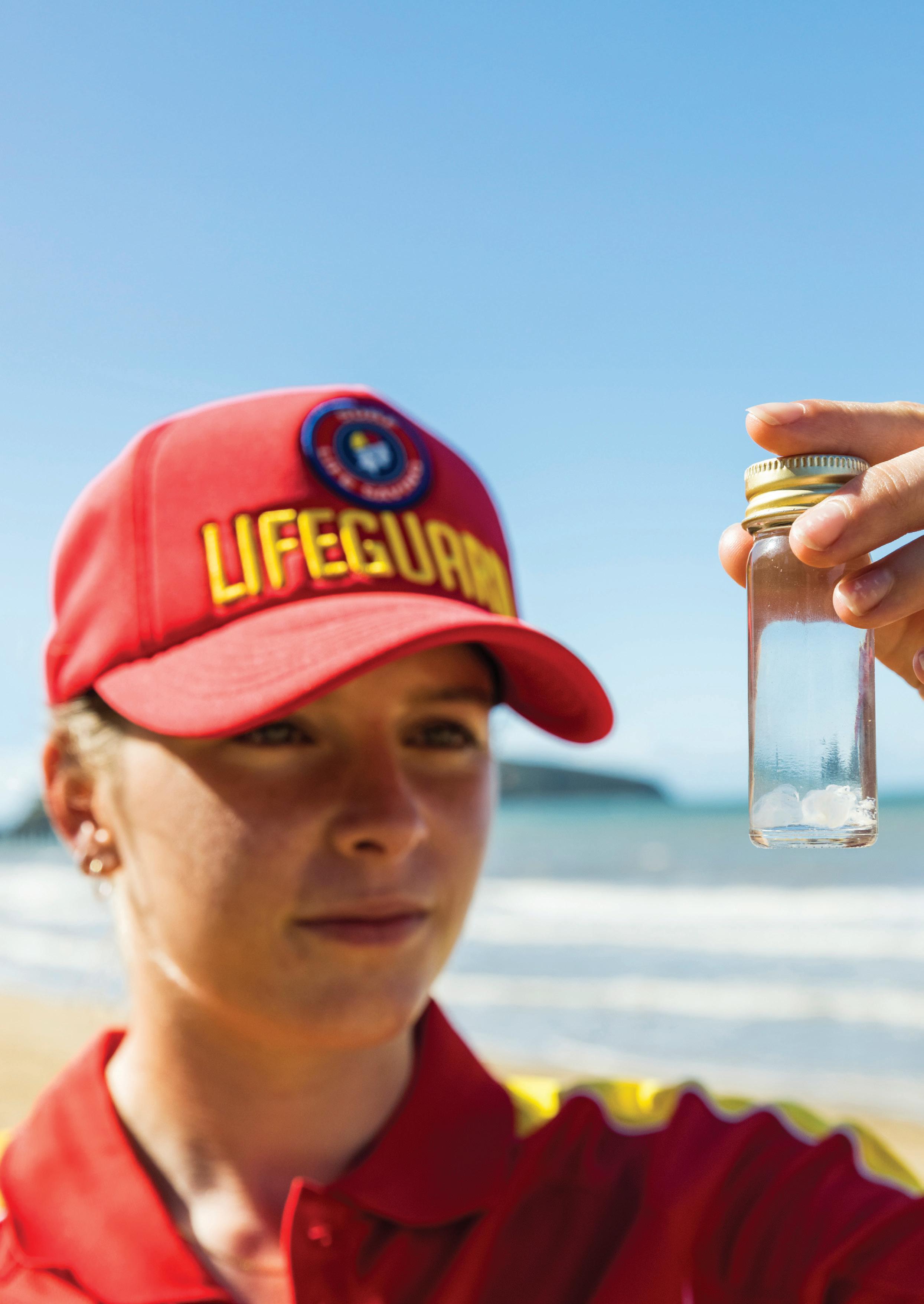
Dr Jaz Lawes, Rebecca Stolper and Associate Professor Mitch Harley

Rip currents are the leading coastal hazard in Australia, with approximately 17,000 rip currents occurring on our beaches on any given day. They cause an average of 21 deaths annually, identified as a causal factor in at least 20% of Australian coastal drowning deaths each year. To reduce the risk of rip current drowning, an innovative approach is needed to reach high-risk demographics, especially given that many of Australia’s ~12,000 beaches are not patrolled by lifesaving personnel.
The RipEye Project is developing a smartphone ripdetection tool to help reduce the number of rip current drowning deaths in Australia. Led by Associate Professor Mitch Harley (UNSW Water Research Laboratory), in partnership with Surf Life Saving Australia, this project uses machine learning and AI for rip identification in combination with social research to help tailor the tool to best suit the requirements of Surf Life Saving and the beachgoing community. This project will develop a novel tool that harnesses

deep learning algorithms to detect rip currents from smartphones that is specifically curated for Australian beaches.
The RipEye is expected to improve identification and literacy of rip currents, especially among high-risk groups such as young males, multicultural communities please and rural visitors as well as training new lifesavers. The research outcomes of this project will support SLSA’s goal to achieve the Australian Water Safety Council’s commitment to reduce coastal drowning deaths by 50% by 2030.
In recent workshops, members of the SLS and UNSW RipEye research teams came together to refine project goals and objectives, develop rip identification surveys, and annotate thousands of crowd-sourced rip current images supplied by lifeguards, members, and other volunteers around the country. These images are taken from multiple perspectives to enhance the algorithm’s capabilities to identify rips from more realistic viewpoints. Preliminary algorithm testing revealed rip detection performance at >85% on the new annotated dataset, although some challenges remain with ambiguous rips as well as at lower angled viewpoints. The encouraging results demonstrate the potential of this tool for application by lifeguards and surf lifesavers, with current project progress involving collaboration
with stakeholder groups to test algorithm roll-out and design. Following extensive testing and training, this new interactive RipEye tool is intended to be gamified and used to improve rip current identification skills and enhance rip current awareness with the Australian public, particularly among high-risk groups.
If you are over 18 years old, help the RipEye project to investigate the best way to educate the community about rip current identification please complete this survey! The survey will take approximately 15–20 minutes, and at the end you will have the opportunity to enter a prize draw to win 1 of 5 $100 Coles/Myer vouchers. More details and participant information can be found at the beginning of the survey.
To start the survey, click on this link https://unsw.au1. qualtrics.com/jfe/form/SV_6scfHxlUdSnAXIi or use this QR code.
Dr Jaz Lawes (SLSA) and Dr Peter Kamstra (University of Melbourne)
Australian beachgoers benefit from an incredible integrated network of lifesaving services who safeguard the community. This contribution to drowning prevention is so successful, such that coastal drowning deaths occur predominantly at unpatrolled locations away from the protection of these services. SLSA is working with drowning prevention researchers to explore innovative approaches to address this challenge of enhancing safety at unpatrolled beaches.
Researchers and lifesaving personnel trialled a new beach safety intervention combining a 20-minute safety lesson delivered by lifesaving personnel with a postlesson conversation to understand whether participants had enjoyed the lesson, learned anything, and if they were likely to change anything about their beachgoing behaviours. Follow-up conversations were conducted (4-6 months later) to measure any enduring impacts of these lessons on behaviours.
Community Beach Safety lessons were delivered by lifeguards in Lorne, Victoria, to approximately 600 beachgoers. Lessons used landmarks and observations of beach conditions to support learning about water safety and risk. Most participants (93%) enjoyed the lessons and 91% reported learning something new. Learning how to identify and escape a rip current were the two most learned skills.
The follow-up interviews revealed that 76% of people who had been to the beach since the lesson changed their beachgoing behaviour, with most trying to identify rip currents with friends or family before entering the water. Of this 76% of participants, 46% reported changing their behaviour at an unpatrolled beach. Increased awareness of risk or ability to recall information from the safety lesson alone did not influence behaviour change, while reflective, normative
learning did. People who reported have changed their beachgoing behaviours, described a reflective change or re-evaluation of their previous beachgoing behaviours.
Statistical modelling revealed that the interactive safety lesson significantly increased the number of risk mitigation behaviours adopted, the number of other people told about beach safety, and the number of behaviour changes adopted at unpatrolled beaches. This significant finding highlights the importance of learning opportunities that allow for reflective cognitive processes that encourage behaviour change. Being given an opportunity to self-reflect and re-evaluate behaviours after an enjoyable learning experience at the beach with lifesaving experts was the driver of these behaviour changes.

Following the success of the pilot, the project was replicated at Umina, New South Wales with 34 safety lessons delivered by surf lifesavers to nearly 300 community members. Preliminary analyses have showed significant community learning, with 86%
(n=64) stating that they learned either how to identify a rip current, how to escape a rip, or how to safely help someone else caught in a rip. This second case study showed the transferability of the approach to different locations and its capacity to impact learning.

To target safer behaviours at unpatrolled locations, safety lessons from lifesaving practitioners could be implemented at scale to provide the needed water safety skill-building that translates to safer behaviours at unpatrolled beaches, or potentially other aquatic locations.
20-MINUTE
COMMUNITY SAFETY LESSON
91%
LEARNED SOMETHING NEW 93%
ENJOYED THE LESSONS
86%
LEARNED HOW TO IDENTIFY A RIP
LEARNED OPTIONS THAT CAN HELP TO ESCAPE FROM A RIP
LEARNED HOW TO HELP SOMEONE CAUGHT IN A RIP
3in4
LOOKED FOR RIPS WHEN THEY WENT TO THE BEACH
46%
CHANGED BEHAVIOUR AT AN UNPATROLLED BEACH
Rebecca Stolper and Dr Jaz Lawes
Surf Life Saving Australia released the 2024/25 Summer Coastal Drowning Report summarising the key coastal drowning and lifesaving statistics over the summer months.
Historically, 40% of coastal drowning deaths in Australia occur during summer, with 51 coastal drowning deaths recorded in the 2024/25 summer season, 22% less than last summer (n=65), and equal to the 10-year average number of coastal drowning deaths.
Key risk factors involved in coastal drowning this summer included:
• Rip currents contributed to at least 38% of summer beach drowning deaths
• Swimming and wading accounted for 47% of summer coastal drowning deaths, followed by boating (16%), and fatal bystander rescuers (8%).
• All summer coastal drowning occurred at unpatrolled areas, away from Surf Life Saving services or out of patrol hours
• 61% of summer coastal drowning deaths occurred over 1km from an SLS service
• 3 in 5 drowning incident locations were in regional or remote areas, accounting for 59% of the summer coastal drowning burden
• 3 in 5 summer rip current drowning deaths occurred between Christmas eve and New Years Day or on the Australia day long weekend.
• Drowning risk was 2.2 time higher during public holiday periods
• Males were overrepresented accounting for 92% of summer coastal drowning deaths
Surf lifesaving personnel worked exceptionally hard over the 2024/25 summer season, performing 5,522 rescues, 1,316,000 preventative actions and 45,555 first aid treatments across the country. Western Australia, South Australia and Victoria performed significantly higher rescue numbers compared with previous years, suggesting increasing numbers of beachgoers placing pressure on lifesaving services. Each one of these rescues can represent a life saved and highlight the important role that lifeguards and surf lifesavers play in safeguarding the community. These lifesaving actions are estimated at approximately $5.28 billion in value to the community, through lives saved and critical injuries prevented.
Finally, this summer saw the rollout of Beach Passport, SLSA’s new initiative to increase beach and water safety knowledge in the community. Beach Passport was launched in November last year via TV and online channels, alongside the new ‘Stop Look Stay Alive’ national water safety campaign. More than 101,000 people visited the Beach Passport website, with over 29,000 completing the virtual course, for many of whom this was likely the only water safety education they received during the summer season.


Grant Smith
ALa Niña event concluded in mid-2023 after persisting over three consecutive summers. Floods in late 2022 are consistent with those seen during past La Niña events. But what is La Niña, and how does it relate to El Niño? And how did La Niña change what we experienced and observed along our coastlines over the past three summers?
Australia’s weather is influenced by many climate drivers. El Niño and La Niña have the strongest influence on year-to-year climate variability in Australia, often associated with the well-known swings between droughts and flooding rain. They are a part of a natural cycle known as the El Niño–Southern Oscillation (ENSO) and are associated with a sustained warming (El Niño) or cooling (La Niña) in the central and eastern tropical Pacific Ocean which typically peaks around spring or summer.
Ocean temperatures and the atmosphere interact leading to a range of changes in our climate. Changes in ocean temperatures affect the winds blowing over the ocean, which in turn changes ocean temperature creating a feedback loop that can develop into a La Niña or El Niño. In the case of La Niña, the trade winds that blow from east to west in the tropical Pacific are stronger, moving more warm water from the east to the west.
Changing wind patterns mean changes to the waves generated from these winds. These changes can be in the form of wave size as well as wave direction. Increased temperatures around Australia which are common during La Niña can also increase sea levels to higher than usual. And there is also a change in storminess, leading to increased chances of tropical cyclones in the Australian region that can travel further south.
La Niña and El Niño are not the only climate drivers that can have an indirect impact on Australian coastlines during summer. Along the southern Australian coastlines, the most important climate driver that changes winds and waves is the Southern Annular Mode (SAM), which depicts whether the strong eastward moving winds over the Southern Ocean are closer to Australia (negative phase of the SAM) or further away from Australia than normal (positive phase of the SAM). The closer these winds are to Australia the stronger the wave activity will be near to our coastlines. La Niña and the positive SAM have been shown to be linked in the past, usually resulting in Southern Ocean winds moving away from Australia and closer to Antarctica, meaning less storms near to Australia’s southern coastlines.
Different coastlines were likely affected by La Niña differently. High energy coastlines such as beaches would have been most impacted by changes in wave behaviour, whereas lower energy coastlines such as harbours, bays, and estuaries are mostly impacted by tides and higher mean sea levels associated with La Niña.
Australia’s east coast has been identified as one of the most sensitive coastlines to changes in wave conditions brought on by La Niña. This sensitivity is not due to changes in wave heights or power, but rather the direction the waves come from. Waves normally come from a south-easterly direction along the east coast of Australia. During an active La Niña, the average wave direction rotates further north, coming from a more easterly to north-easterly direction.

What changes did we likely observe?
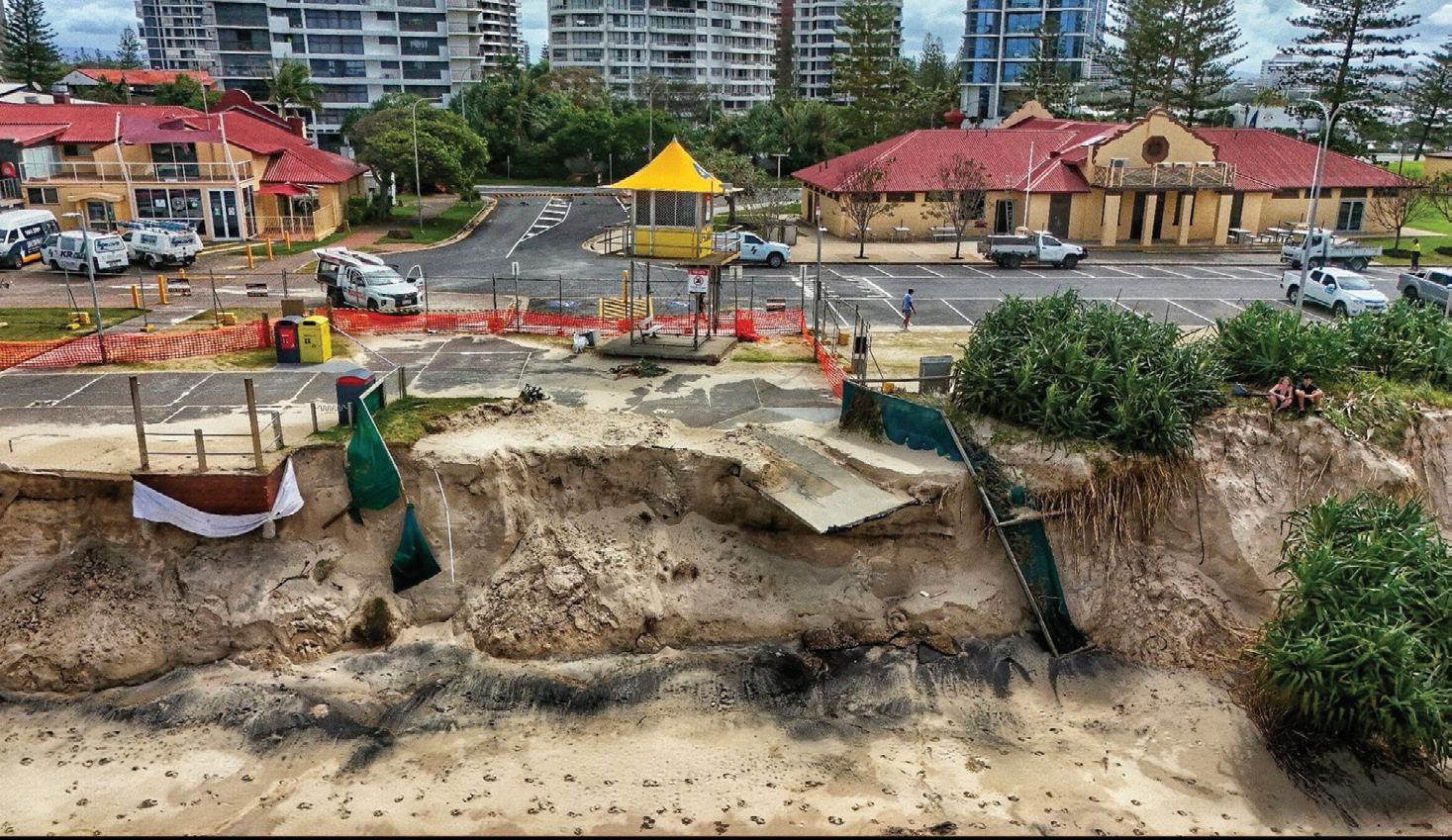
Coastlines are constantly trying to find a balance so that their shape and orientation best matches the direction and power of the most common wave types impacting it. A prolonged change in wave direction puts a coastline out of balance, which can be associated with a noticeable movement of sand. In the case of the southeast Australian coastline, this is likely to be erosion at the northern end of beaches, and possible increases in sand at the southern ends. Northward facing coastlines along the east coast that would normally be protected from wave activity may experience erosion events during La Niña.
Tropical cyclones typically occur more frequently near Australia when a La Niña event is underway. The large waves produced can lead to erosion up to hundreds of kilometres away from the cyclone. La Niña brings with it the conditions that allow cyclones to form further south than usual, producing tropical cyclone swells at coastlines that do not usually experience these. The risk of coastal inundation and erosion from more powerful waves is amplified when sea levels are higher than usual. Waves breaking on top of a higher water level allow them to reach further inland. Therefore, impacts of extreme weather are of most concern during spring tides, the periods when the heights of high tides that occur near to the full and new moon phases of the lunar cycle.
There is an increase in wave heights along Western Australian coastlines in times of La Niña. Under the right conditions these can lead to increased potential for coastal flooding and erosion hazards.
Changes in rainfall, floods and ocean temperatures during La Niña also impact our coasts. La Niña is often associated with heavy rainfall and increased cloud cover, which can reduce water quality, and affect general beach amenities.
During El Niño and neutral ENSO conditions, coastlines typically experience calmer conditions which allow beaches around Australia a chance to recover from previous erosion events.
Check out the Climate Driver Update for information on the status of ENSO at http://www.bom.gov.au/climate/ocean/outlooks/ Keep an eye on wave forecasts for the Australian coastline at http://www.bom.gov.au/australia/meteye/


Working as a lifeguard on Magnetic Island is an experience unlike any other. From the moment you step off the ferry, the island’s natural beauty and unique challenges make it clear that this is no ordinary job. With its remote bays, stunning beaches, and unpredictable conditions, Magnetic Island calls for lifeguards who are ready to adapt, think on their feet, and work as part of a close-knit team. Stinger season, running from November to May, is a defining part of lifeguarding here. The island’s waters are home to some of the most dangerous marine creatures in the world, and responding to jellyfish stings is just one aspect of the role. But it’s not all about stingers. The island’s rugged terrain adds an extra layer of complexity to rescues. During a particularly serious rescue, a moped rider had fallen into a valley. The
lifeguard attended the challenging rescue, descending 25 metres, stabilising the patient, and assisting fire and rescue teams in abseiling the patient to safety.
Magnetic Island lifeguards also play a crucial role in community education, teaching visitors about marine dangers and how to enjoy the island safely.
Despite the challenges, there’s something deeply rewarding about being part of the Magnetic Island team. The teamwork among lifeguards is unmatched, and the sense of accomplishment after a tough day— whether it’s from saving a life or simply keeping the beach safe—is something that stays with you.
If you’re looking for a role that pushes you to be your best while immersing you in one of Queensland’s most beautiful locations, Magnetic Island might just be the perfect fit.


Townsville offers a variety of work environments, from patrolling busy beaches like The Strand to managing a multi-day search and rescue operation. The city’s tropical climate and bustling aquatic scene mean no two days are ever the same. During stinger season, your vigilance and quick thinking are put to the test as thousands of beachgoers rely on you to keep them safe and educate them on the risk these invisible killers pose. What sets Townsville apart is the opportunity for career progression. Lifeguards here are encouraged to take on additional responsibilities, from mentoring new staff to managing equipment and rosters. Permanent staff are given the opportunity to join our senior leadership team gaining unique skills and experiences that aren’t often afforded. Training programs like drone operations and Beach Operations Management ensure you’re always developing new skills. The North Barrier Branch is huge, spanning over 550km of coastline, so you have the opportunity to work over a variety of sites broadening your experience and professional network.
Being part of the Townsville lifeguard team means more than just working a job—it’s about building connections. You’ll become a familiar face in the community, forging relationships with regular beachgoers and contributing to local events. Within the team, the supportive culture fosters collaboration, and every member’s input is valued.
For many, Townsville is a stepping stone to bigger opportunities. Past lifeguards have gone on to roles in emergency services, including paramedics and rescue crew officers, or advanced within the Australian Lifeguard Service. The region’s diversity of sites and roles means lifeguards build an impressive skill set that’s valued across the industry.
Outside of work, Townsville’s lifestyle has much to offer. With its vibrant community, outdoor activities, and access to nearby islands and waterfalls it’s easy to see why so many choose to call this city home. Whether you’re into exploring hiking trails, discovering the Great Barrier Reef, or just enjoying a laid-back tropical vibe, there’s something here for everyone.
Visit lifeguards.com.au or follow @tsvlifeguards on Instagram to find out more and apply. Your next adventure could start here.
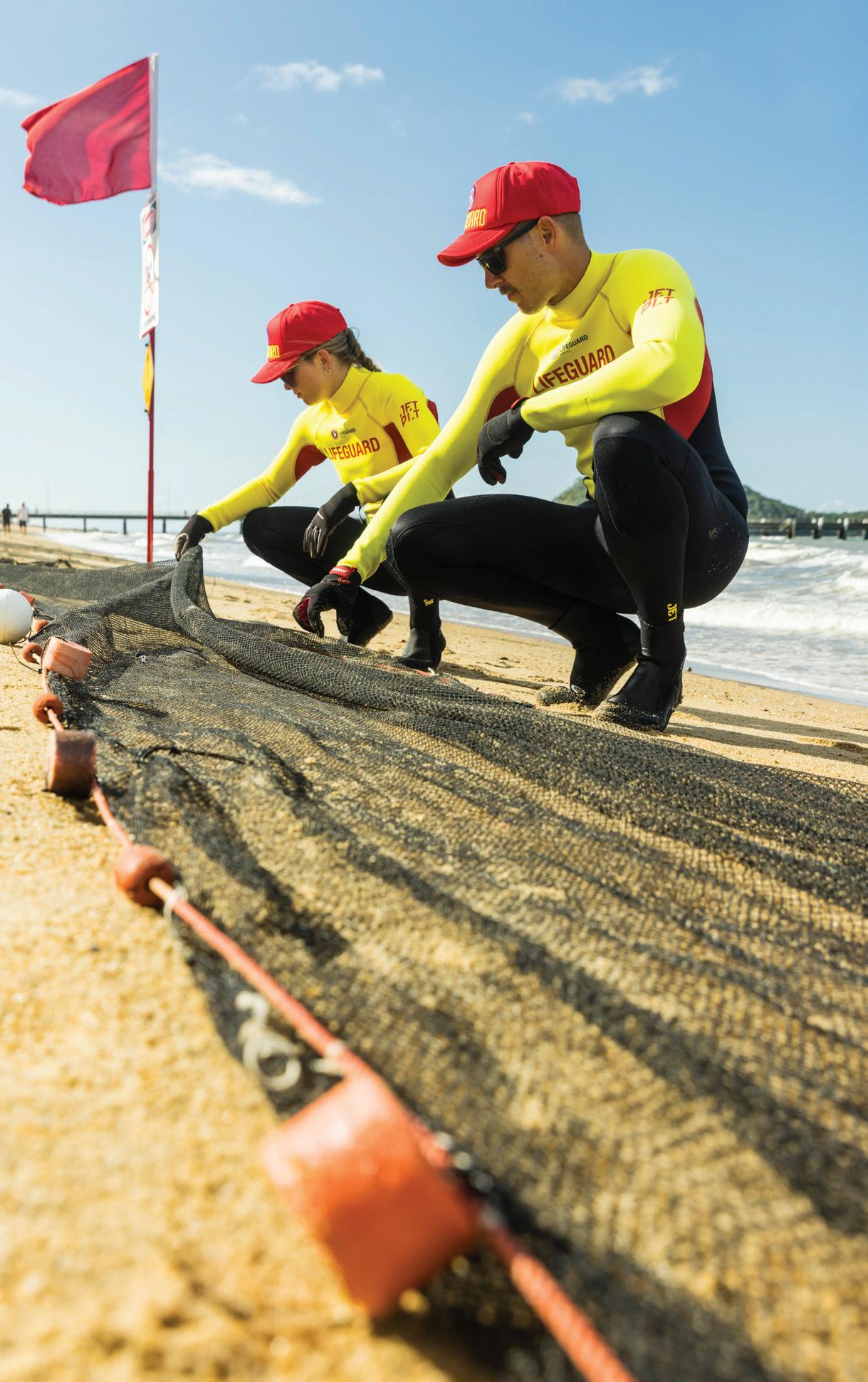
On January 31, 2023, lifeguards Mary Clingeleffer and Morgan Evans were nearing the end of a quiet shift at Clifton Beach, Tasmania, when an emergency unfolded at North Clifton, a dangerous unpatrolled section of the beach. A father had entered the treacherous waters to rescue his two daughters and was now struggling to stay afloat.

Responding immediately, the lifeguards were on duty at a patrolled location close by, the lifeguards lowered the red and yellow flags, grabbed rescue equipment, and rushed to the scene. By the time Mary reached the water, the girls were safe, but their father was exhausted and in distress. Battling rough surf and the powerful downdraft from an Ambulance Tasmania helicopter, she reached the man, secured him on her rescue board, and guided him safely back to shore.
The emotional rescue reinforced the importance of vigilance and teamwork. The incident prompted increased patrols at North Clifton and served as a reminder of the risks of unpatrolled beaches. Inspired by the experience, Mary is now pursuing a career in emergency medical care, while Morgan reflected on the critical role lifeguards play in preventing tragedies.
This rescue highlights the dedication and skill of surf lifesavers and underscores the importance of always swimming between the flags.
As Australian fans tune in to Survivor: Brains v Brawn, cheering on contestants battling to Outwit, Outplay, and Outlast, a dedicated team works tirelessly behind the scenes to keep them safe. For the 10th consecutive series, Surf Life Saving Tasmania (SLST) has been the trusted water safety provider for the Survivor production, ensuring the challenges are not only exciting but also safe.
This year, Port Sorell SLSC surf lifesaver Lachie Frame had the opportunity to spend ten weeks in Samoa coordinating the water safety team. Arriving at the start of production, he was initially joined by SLST Senior Lifesaving Services Coordinator Ned Reardon to assist with onboarding for the role. Later, as filming wrapped
up, Lachie helped transition the next water safety officer for the following series.
For two and a half months, Lachie was immersed in all aspects of the production, from preparing challenges

and conducting risk assessments to providing water safety support. Thanks to the expertise of the SLST team, no major incidents occurred.
“There weren’t really any big emergencies,” Lachie shared. “That’s a testament to the controlled environment we created. I worked closely with the challenge setup crew and the first aid team, attending all challenge tests as the water safety representative. We collaborated to assess risks, ensuring the challenges remained thrilling while keeping contestants safe.”
Lachie wasn’t alone in his efforts—he was supported by a team of local lifeguards, many of whom SLST members have trained over the years.
“We’ve got a local guy, Sam, who’s heavily involved in swimming and water activities in Samoa,” Lachie explained. “He’s been part of our team for years and helps recruit new lifeguards before we arrive. He also takes on a role in training, which is a huge help.”
During his time on the island, Lachie additionally helped train eight locals as lifeguards, leaving a lasting impact by also equipping hotel staff with basic rescue and self-rescue skills.
Lachie’s Survivor experience came during a gap year after finishing school in 2023. Now, he’s embarking on his next challenge—studying medicine at Monash University, with aspirations of working in aeromedicine, possibly with the Royal Flying Doctor Service. Although he is now based in Victoria and attached to Hampton LSC, his surf lifesaving journey began as a Nipper at Port Sorell SLSC.
His passion for lifesaving was first sparked at SLSC’s Junior Development Camp in 2020, where he heard from Nick and Jack Wood—former Ulverstone SLSC members—who had previously provided water safety for Survivor. Their stories opened his eyes to the unique opportunities lifesaving could offer, ultimately leading him to his own unforgettable experience in Samoa. Having returned home four months before the series began airing in mid-February, Lachie reflects on how quickly the experience passed.
“Ten weeks sounds like a long time, but it flew by,” he said. “By the end, I couldn’t believe I was heading home already. You build a real family with the production crew, and everyone gets along so well—it was an incredible experience.”

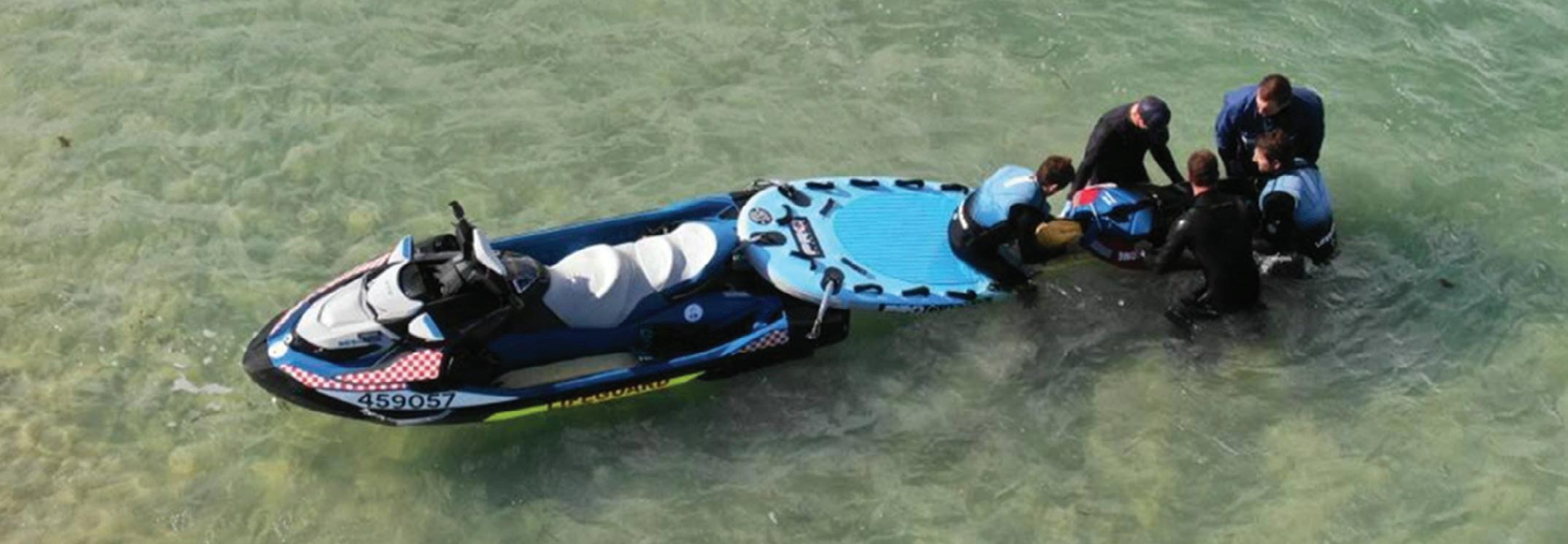
Situated along the Bate Bay coastline, the Ocean Safety & Lifeguard (OSL) Unit of Sutherland Shire Council (SSC) is an essential service focused on ensuring the safety and well-being of the community at some of the region’s busiest beaches. From peak surf seasons to casual beach visits, the unit delivers an array of technical services, cutting-edge safety equipment, and educational programs that promote ocean safety while preparing the community to navigate beach environments with confidence.

Bate Bay comprises four main beaches and their respective Surf Life Saving Clubs, Cronulla, North Cronulla, Elouera, and Wanda. Together, they form one of the Shire’s most iconict coastal landmarks and serve as a central hub for the Ocean Safety & Lifeguard Unit’s operations. With its expansive coastline, clear waters, and vibrant community, Bate Bay attracts thousands of visitors annually, underscoring the importance of effective safety operations. The Unit’s core responsibilities include providing daily beach and water safety services, supporting sporting competitions and other beach events, leading community engagement initiatives, and actively contributing to environmental conservation and broader public safety efforts.
The Ocean Safety & Lifeguard Unit is a dedicated division of Sutherland Shire Council, staffed year round by a mix of full-time, seasonal, and casual lifeguards who meet rigorous training and qualification standards. All personnel undergo continuous education in surf rescue, first aid, physical competency, and licensing, with seasonal recruits receiving intensive preseason training to ensure readiness for dynamic beach conditions.

Managing safety at Sutherland Shire’s busy beaches involves addressing a range of coastal hazards, including dangerous surf, rip currents, and marine life risks, through rapid and informed responses. The Ocean Safety & Lifeguard Unit meets these challenges using real-time monitoring systems, weather and marine surveillance, advanced training, and public education programs to enhance safety and awareness.
The Sutherland Shire Council’s Ocean Safety & Lifeguard Unit enhances beach safety through the integration of advanced technologies such as drones, rescue watercraft, mobile rescue vehicles, and real-time surveillance systems. These innovations support faster emergency responses, improved situational awareness, and more effective monitoring across the coastline, including remote and high-risk areas.
Looking ahead, the Sutherland Shire Council’s Ocean Safety & Lifeguard Unit is committed to expanding its services to broader demographics. In addition to offering more targeted programs for different age groups, the unit aims to enhance community engagement by collaborating with neighbouring
councils, tourism bodies, and local organizations. This initiative will ensure that ocean safety education remains accessible to a diverse range of community members, including families, tourists, and those from culturally and linguistically diverse backgrounds.
The Sutherland Shire Council’s Ocean Safety & Lifeguard Unit works closely with internal teams and external partners to maintain high safety standards across local beaches. Key collaborations include the NSW Coastal Safety Group, state and national organisations like Surf Life Saving NSW and APOLA, and local authorities such as the Sutherland Shire Police, all contributing to a coordinated approach to coastal water safety
The Ocean Safety & Lifeguard Unit of Sutherland Shire Council is a model of technological innovation, operational excellence, and community engagement. From cutting-edge rescue equipment and aerial surveillance to educational outreach programs, the unit stands at the forefront of beach safety, ensuring the community’s security while promoting responsible enjoyment of the region’s beautiful coastal environments. Whether it’s saving lives or educating the next generation of beachgoers, the Ocean Safety & Lifeguard Unit is dedicated to making every beach visit safer for all.
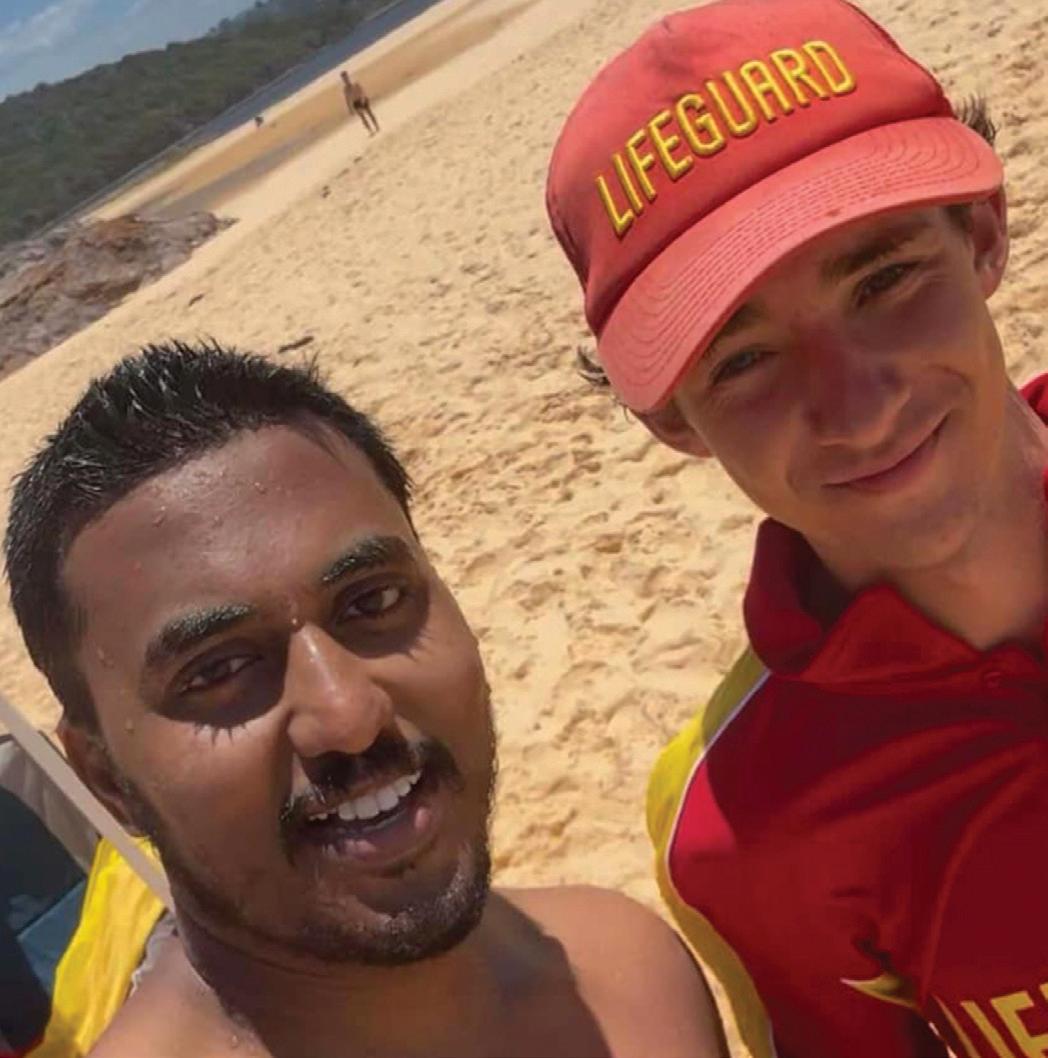
The rescue of a beachgoer on the New South Wales, Far South Coast has highlighted the importance of swimming between the flags and the vital role of volunteer lifesavers and lifeguards. Since the start of the NSW school holidays, there have been 816 rescues— people who might not have made it home without lifesaving intervention.
One of those rescues was Arkay. Like thousands of Australians, Arkay and his friends spent the summer camping. At Short Point Beach, a patrolled location near Merimbula, he was enjoying the waves when he found himself in serious trouble.
Arkay later sent a message to Surf Life Saving NSW with a photo of himself and a young Australian Lifeguard Service (ALS) lifeguard, writing simply, “I believe his name is Angus. He saved my life.”
Angus Carpenter, 18, is in his third season as a professional lifeguard on the Far South Coast.
Until this day, he had never faced a serious rescue but had completed hundreds of preventative actions and first aid treatments.
On Friday, 3 January, the last day of his camping trip, Arkay and a friend decided to go for one last swim, staying between the red and yellow flags. After his friend headed back to shore, Arkay realized he was much further out than he thought. Panic set in as he tried to swim back, but he wasn’t moving forward. Unaware he was caught in a rip, he struggled against the waves, losing energy as water pulled him under. Desperate, he raised his arm, hoping a lifeguard would see him.
Angus, observing the difficult surf conditions with strong onshore winds and an outgoing tide, had already been watching the swimmers. When he noticed Arkay struggling, he grabbed a rescue board and a tube, quickly making his way out. He first gave the tube to Arkay’s friend, ensuring he got to shore, then focused on Arkay, who was visibly panicked and moments away from going under.
“It’s something you don’t think about until you’re in it,” said Angus. “When I reached him, he was grasping for breath and had only seconds left.”
Arkay recalled the relief he felt when Angus arrived. “Seeing him was the most amazing feeling. I got on the board, and he paddled me to safety.”
Although shaken, Angus remained calm, reassuring Arkay and floating him back to shore with the help of the wind. Once safely on land, Arkay took a quick selfie with his rescuer before heading home to Sydney, grateful for having swum at a patrolled beach.
That evening, Angus reflected on the day’s events. “I guess you don’t realise you’re actually saving lives until you do. It’s a serious and important job.’’
*Statistics as of 8/1/ 2025.

The Australian Lifeguard Service Northern Territory (ALSNT) has experienced significant growth over the years. Originally established in 2009 with the launch of a 365-day lifeguard service at the Darwin Waterfront, ALSNT now operates year-round at seven

locations. These include Darwin’s defence base pools, Palmerston Water Park, and Leanyer Recreation Park. In 2024 alone, ALSNT lifeguards patrolled for a total of 41,411.5 hours, performed 18 rescues, and undertook 295 first aid treatments.
ALSNT is proud to have partnered with the City of Darwin for over a decade, delivering seasonal lifeguard services at Mindil Beach and Nightcliff Beach every Dry
Season, from 1 June to 30 September. Mindil Beach, a renowned tourist destination, welcomed over 52,704 visitors during patrol hours. The partnership continues to enhance community safety, with 27 first aids and 393 preventative actions recorded during the last patrol season. We look forward to continuing this valued collaboration in the years to come.
Our lifeguard team averages around 70 employees throughout the year. Given the limited pool of qualified lifesavers in the NT, ALSNT has had to think creatively when it comes to recruitment. In response, the Lifeguard Training Program was launched in 2016. This program supports aspiring lifeguards who meet fitness prerequisites by providing all required training free of charge. Over a six-week period, participants gain four nationally recognised VET qualifications through a mix of theory, practical sessions, and on-the-job training.
Our recruitment process has received consistent positive feedback from participants and has helped position ALSNT as an employer of choice. It not only attracts aspiring lifeguards but also addresses retention challenges associated with Darwin’s transient population.
The unique nature of our lifeguard locations continues to test our teams in unexpected ways — from crocodiles spotted in pools at defence facilities to pythons found near the playground adjacent to the lagoon at Leanyer Recreation Park.


ALSNT continues to play an active role in supporting community organisations and a wide range of events by providing water safety and first aid services, including longstanding involvement in the Holi Festival at Lake Alexander, as well as contributions to the Melanoma March, Carols by Candlelight, the International Dragon Boat Festival, and Territory Day at Mindil Beach.
Through strong partnerships with local sporting groups, ALSNT provides ongoing water safety support to the Darwin Triathlon Club across both sprint and Olympic-distance races, including events at Lake Alexander and the more remote Lake Bennett, 80km from Darwin — a commitment praised by Triathlon NT and participants for the team’s supportive and professional presence on the water. Our continued collaboration with Swimming NT and Masters Swimming has also remained strong, with multiple events held at the Darwin Waterfront under the watchful eye of our lifeguards. A particular highlight in 2024 was ALSNT managing water safety and first aid for the Australian Masters Open Water Nationals — a proud achievement that further strengthened the visibility of our service at this iconic location. To showcase ALSNT’s unique approach to lifeguarding across the Territory, we’ve launched an Instagram page: @LifeguardTerritory.
The page highlights our training days, patrol locations, event participation, and safety messaging. We hope to continue building community awareness and celebrating the work of our incredible team through this platform.
The Australian Lifeguard Service in the Northern Territory continues to benefit from a dedicated group of lifeguards who return seasonally to work in the region.
One of those team members is Will Vaughn-Smith, who is primarily based in New South Wales and has returned to the Territory for several years.
Will has grown particularly fond of patrolling the iconic Mindil Beach each year—a location that offers a few perks once the day’s work is done.
“Mindil Beach is one of two beaches in the NT patrolled by lifeguards, and only during the dry season. It’s 32°C every day. At high tide, the water is beautifully clear; at low tide, it’s muddy and ankle-deep for 500 metres out to sea! When you finish work in the afternoon, you can catch the most incredible sunsets and then duck into the famous Mindil Markets on your way out. It’s always a highlight when working for SLSNT.”
Will’s story is not unique—many lifeguards return to the Northern Territory during the winter months, making the most of the Territory’s dry season. University students also often return during their holiday breaks, eager to get back on patrol.
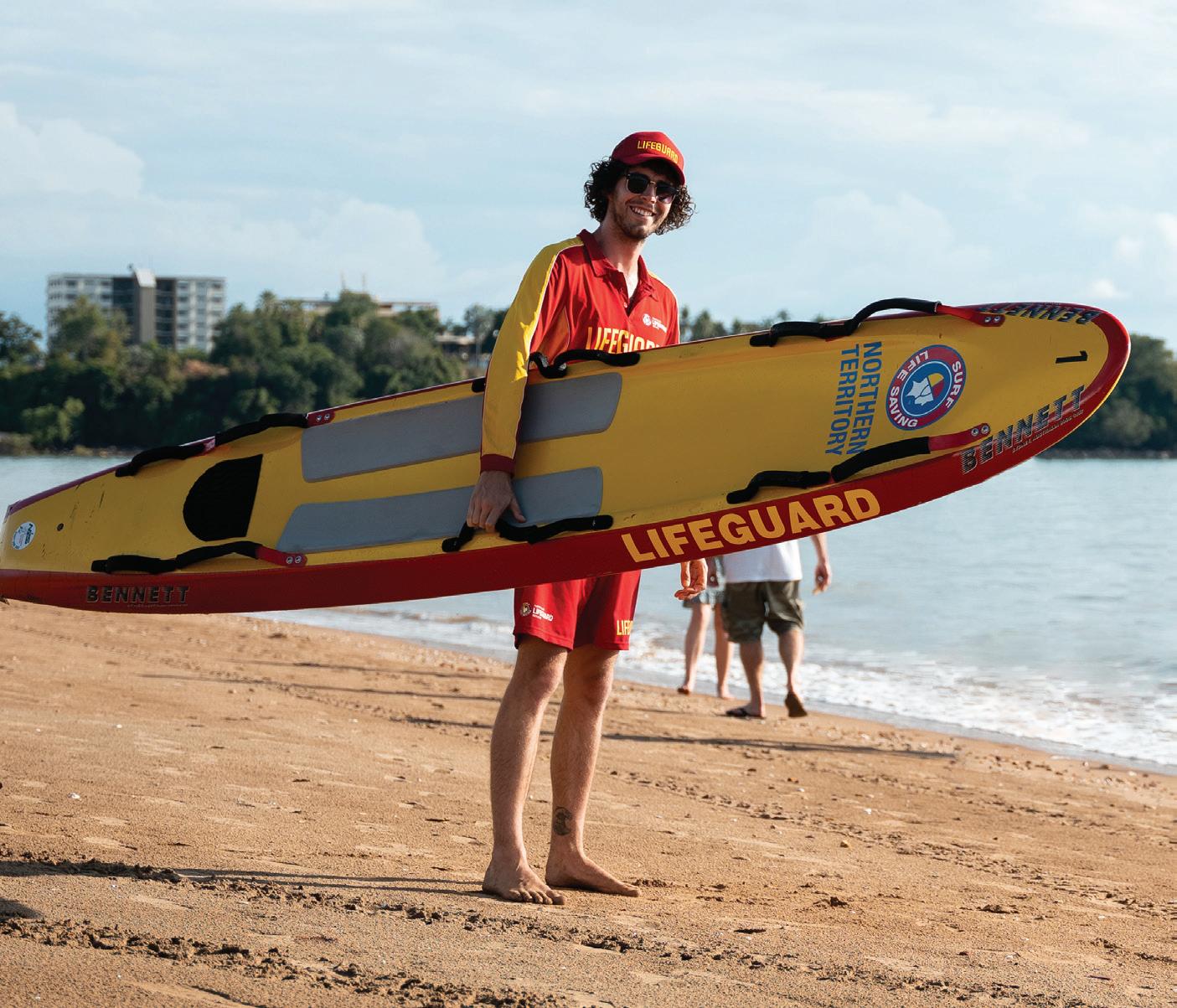


The SLSSA Lifeguard Service operates to complement our volunteer lifeguard service by providing safety coverage along South Australia’s coastlines on weekdays throughout the summer season. This service plays a vital role in ensuring the safety of both residents and tourists at key beaches while also offering expert support for various events across the state.
During the 2024/25 season, the SLSSA Lifeguard Service operated at Glenelg Beach for the City of Holdfast Bay, which is one of the state’s busiest coastal destinations. Lifeguards were on duty from 2nd December 2024 till 28th February 2025.
When council funding is available, we’ve also provided a paid lifeguard service at Goolwa Beach for the
Alexandrina Council during the summer school holidays. This service has operated for several years but was not in place for the 2024/25 season.
Beyond the beaches, SLSSA lifeguards provided professional safety coverage at Rowing SA events in locations such as West Lakes, Port Adelaide, and the River Murray. They also supported major events along the River Torrens, including the Tour Down Under, earning praise for their expertise and professionalism. By covering weekdays, the SLSSA Lifeguard Service complements our volunteers’ weekend efforts, ensuring continuous protection for beachgoers. Together, they form a vital safety net, dedicated to safeguarding and educating the community.

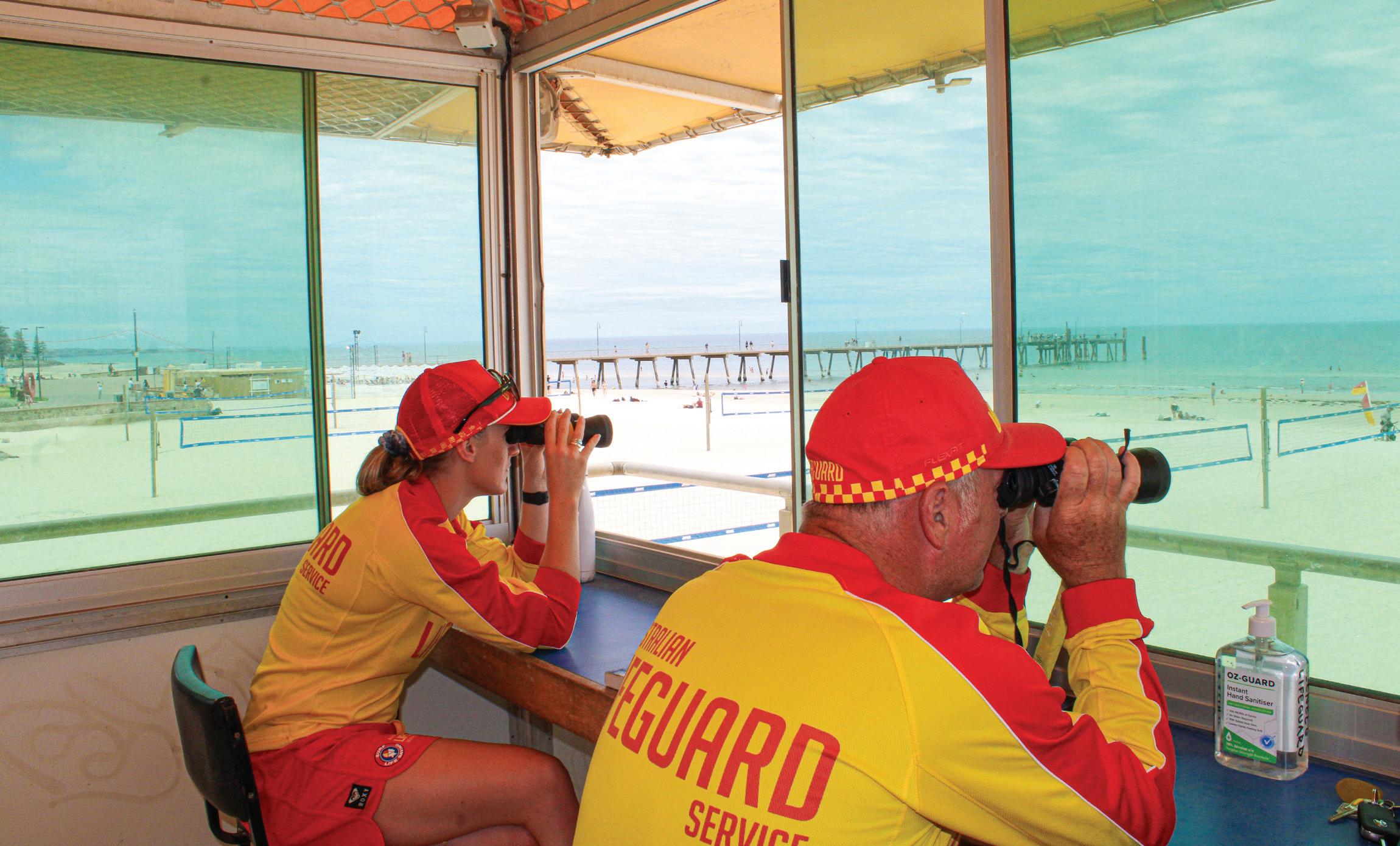
Despite unpredictable conditions and diverse beachgoer behaviours, the SLSSA Lifeguard service conducted 2,575 preventative actions, resulting in only three rescues. This highlights the effectiveness of SLSSA’s proactive safety measures and public education. At Glenelg, lifeguards responded to risks such as alcohol consumption, substance use, and highrisk activities like jetty jumping, coordinating with local authorities to keep visitors safe. Meanwhile, during the peak holiday period, Goolwa Beach experienced a
300% surge in attendance. Lifeguards issued warnings and educated beachgoers on safety, reinforcing SLSSA’s commitment to immediate response and longterm prevention. The expansion of the Coastal Camera Network also enhanced lifeguards’ monitoring capabilities, allowing quicker and more effective responses to potential dangers. This innovation has improved rescue outcomes and incident management.

2,575 PREVENTATIVE ACTIONS
SLSSA LIFEGUARD SERVICE RESULTING IN ONLY 3 Rescues
Each year, Surf Life Saving WA’s Lifeguard Academy opens the door for aspiring young lifesavers to take their first steps toward a career in coastal safety through three dynamic and immersive programs. Designed to ignite passion, build essential skills, and showcase the exciting world of professional lifeguarding, the Nipper Lifeguard Program, Youth Lifeguard Program, and Rookie Lifeguard Program are proving to be a vital recruitment pathway for SLSWA’s commercial lifeguard service.
Tailored for Under 13 members, the Nipper Lifeguard Program is an action-packed one-day event that introduces young lifesavers to the operations of SLSWA’s professional lifeguard services. Held at City Beach and completely sold out for 2025, participants gained hands-on experience in surf and ocean skills, powercraft operations, basic first aid, and rescue techniques. With visiting lifeguards sharing real-world experiences, the day provides both inspiration and a sneak peek into what it takes to wear the iconic red and yellow.
For U14 and U15 members ready for the next challenge, the two-day Youth Lifeguard Program expands on the foundations of lifesaving through advanced surf skills, first aid, and powercraft familiarisation. Also hosted at City Beach, this program includes guest sessions with working lifeguards, hands-on rescue scenarios, and an exciting look at career opportunities within SLSWA. Participants walk away with improved ocean awareness and new friendships. This program is a must for any youth member looking to progress toward a professional role.
The pinnacle of the Lifeguard Academy, the Rookie Lifeguard Program is a five-day intensive camp for 16-17-year-olds ready to make the leap from volunteer to paid professional. Set in the stunning South West at SLSWA’s Development Centre and supported by travel and accommodation subsidies for regional members, this structured program delivers Silver Medallion Aquatic Rescue training, advanced rescue scenarios, lifeguard mission testing and real-time insight into the Woodside Jet Ski Team and Westpac Life Saver Rescue Helicopter operations. The top 10 graduates are also invited to join a week-long Immersion program, where they work side-by-side with SLSWA Lifeguards on the beach.
Through these three progressive programs, SLSWA is shaping the future of beach safety, providing clear, supported pathways from passionate Nippers to highly skilled, professional Lifeguards. Whether it’s your first board paddle or your first rescue scenario, the Lifeguard Academy is where the journey begins.
Lifeguard AcademySurf Life Saving WA Rookie Lifeguard Program
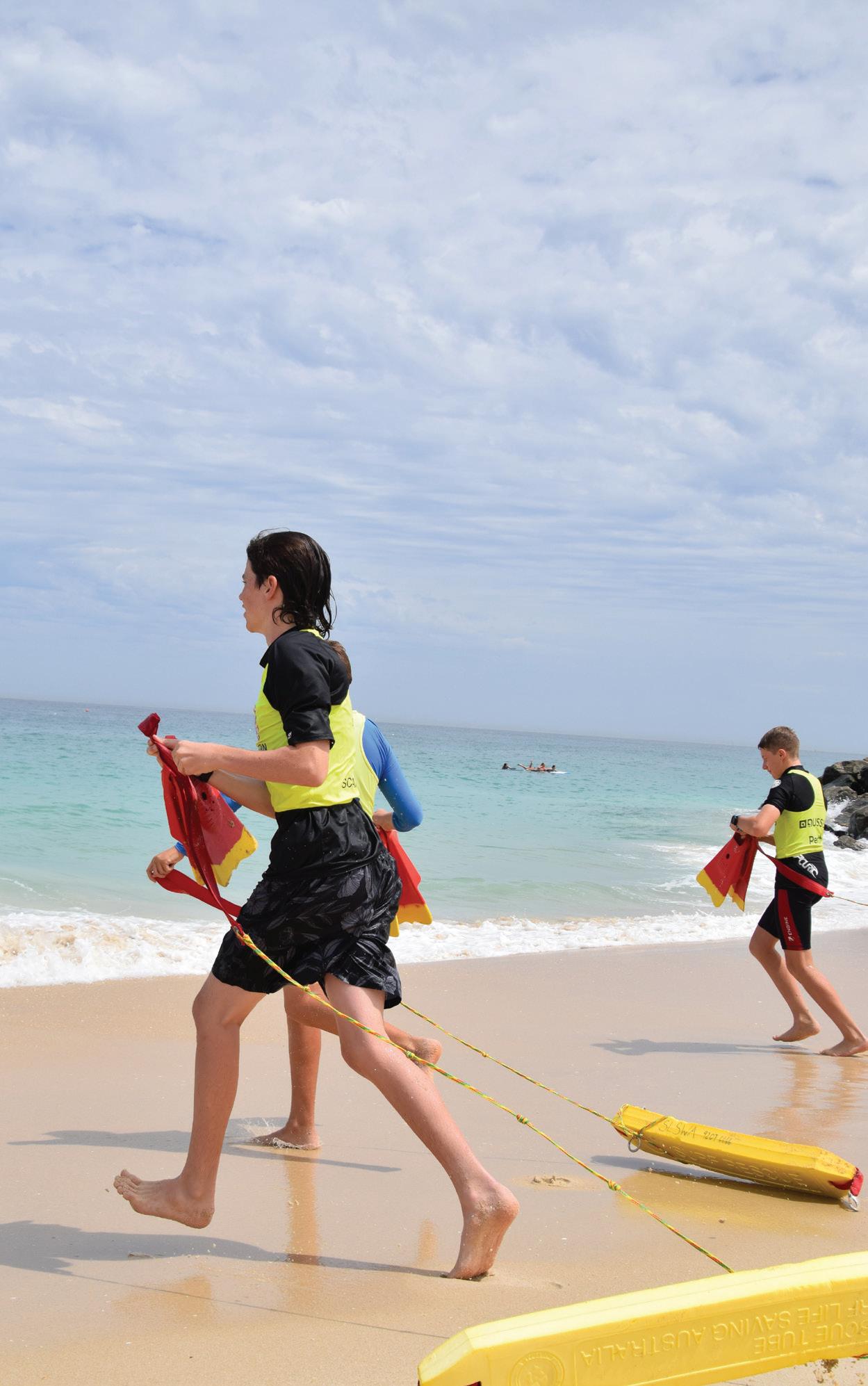



Life Saving Victoria has overseen a gender equality success story in encouraging women to become beach lifeguards.
Beaches on the Mornington Peninsula in Victoria’s southeast were seeing low and declining numbers of women in lifeguarding services, which were already male-dominated.
As a solution, the Pink Guard shift initiative was launched during the 2021-22 patrol season. The initiative involved establishing an all-female Saturday morning shift at the peninsula’s popular Portsea Back Beach. The Pink Guard shift was aimed at increasing visibility, confidence, and participation of women in lifeguarding.
Running an all-woman lifeguarding shift was initially a challenge, with services needing to call on female lifeguards from other areas to have adequate numbers. Over time, though, numbers and services grew.
The Pink Guard shift expanded to a full-day patrol at Portsea in 2022/23.
The following season, multiple all-female patrol teams were established at Portsea and other Mornington Peninsula beaches at Sorrento and Gunnamatta. Lifeguards from across the state got behind the Pink Guard initiative, with female lifeguards travelling from other regions to take part.
The initiative has continued to flourish in the 2024/25 season, with all lifeguard sites on the Mornington Peninsula hosting all-female Pink Guard teams. Services have also expanded to include a female Rescue Water Craft operator and Area Resources Officer. And the Pink Guard initiative has now expanded further, with a Pink Guard patrol now being established on the Surf Coast in western Victoria.
On top of increasing female participation, the Pink Guard initiative has been a vital platform for fostering leadership, inclusivity, and important career pathways for women in Victoria’s lifeguard services.
The Pink Guard initiative is one of many programs aimed at supporting women within Life Saving Victoria
leadership, inclusivity, and important career pathways for women in Victoria’s lifeguard services.
The Pink Guard initiative is one of many programs aimed at supporting women within Life Saving Victoria and the state’s lifesaving movement.
LSV’s Women in Lifesaving program, formerly the Female Leadership Network, was established to build the capabilities of women in all facets of lifesaving.
The program aims to:
Enhance the development of our female leaders and our future leaders.
Create an environment that encourages socialisation and positive relationships between female participants.
Encourage further involvement and opportunities for women in the lifesaving movement.
Develop leadership skills through a variety of activities, keynote speakers and networking events.
Provide the opportunity to develop new networks within lifesaving.
Provide the opportunity to develop broader professional networks that extend beyond lifesaving and into professional industries and everyday life.
Partner with other areas of lifesaving to encourage collaboration across all areas of the movement, and
Provide mentoring opportunities to female leaders within lifesaving.
Life Saving Victoria’s Ready to Lead program has also supported more than 250 women to develop their leadership capabilities within lifesaving, the aquatics industry and emergency services. On top of this, LSV’s Targeted Female Leadership Program has helped women build skills in club management, governance, and communication skills.
As with so many organisations throughout our, we can say that we’ve come a long way, and at the same time we recognise that there is still much work to do.
We are committed to enhancing our organisation while also leading by example on this important issue within the communities we serve.
Our goal is to ensure that our clubs and the broader lifesaving movement are safe, inclusive, and supportive environments where women and girls are empowered to achieve their full potential.

Victoria is working to make its beaches more inclusive, ensuring everyone can enjoy the coastline regardless of mobility. A key initiative is the widespread installation of accessible beach matting at most Beach Lifeguard sites across Port Phillip Bay and other locations. This matting provides a stable path over sand for wheelchair users, parents with prams, and those with temporary mobility issues.
Community-led projects like Port Campbell’s “Goldie’s Way” showcase what’s possible with collaboration. Named after local resident Goldie Elsum, this setup includes beach matting, a free beach wheelchair and walker, a portable hoist, accessible parking, and toilet facilities. It was made possible through partnerships between the Port Campbell Surf Life Saving Club, Variety Club, Parks Victoria, and others.
Similarly, at Altona Beach, the local lifesaving club teamed up with Hobsons Bay City Council to extend matting from the promenade to the waterline, improving access for all visitors. Beach Lifeguards support these efforts by placing the matting between the red and yellow flags, encouraging safe and inclusive beach use.
Beyond matting, free MobiChairs—floating beach wheelchairs—are now available at several beaches, including St
Kilda. These chairs, designed for both sand and water, allow users to float and enjoy the ocean with assistance from lifeguards. St Kilda Life Saving Club also offers accessible change facilities with a hoist system to support this initiative.
Through strong partnerships between councils, lifesaving clubs, and community organisations, Victoria is creating beaches that are open, welcoming, and accessible for all.






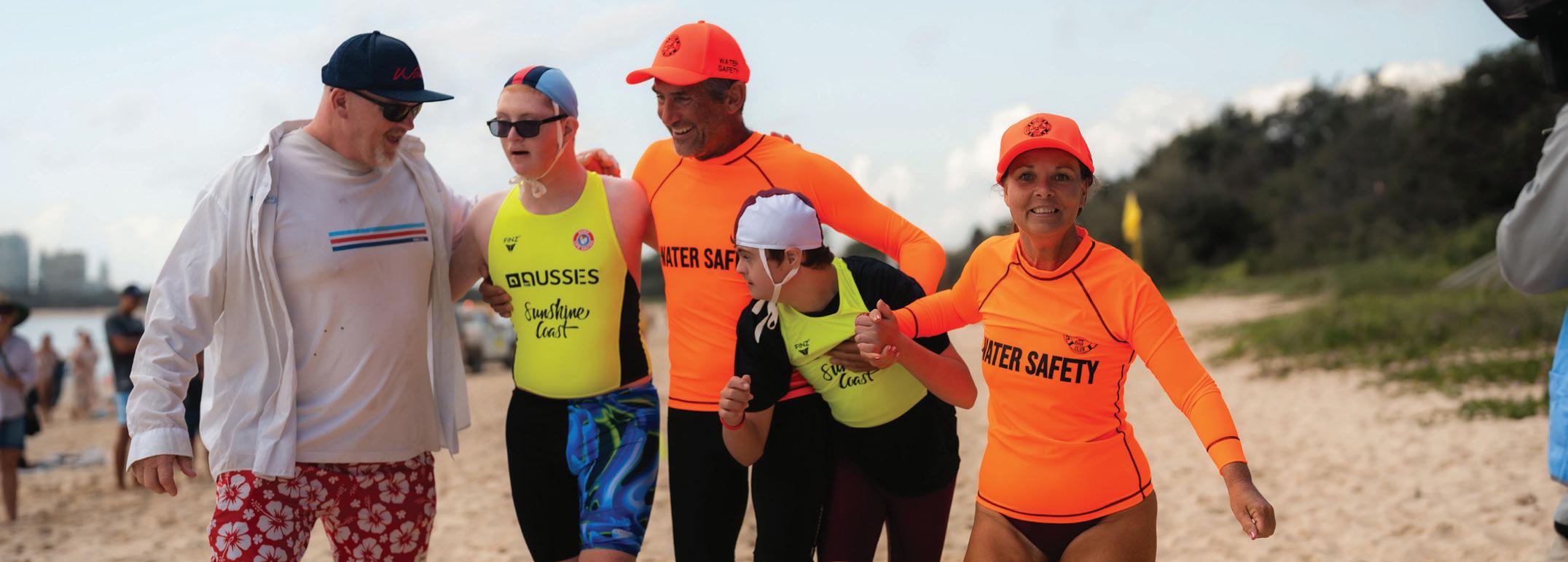
Surf Life Saving exists to save lives, create great Australians, and build better communities.
After a comprehensive 18-month consultation process, the SLSA Diversity, Equity & Inclusion Framework was launched in November 2024.
While the framework itself is new, Surf Life Saving has been implementing strategies within the diversity, equity, and inclusion space for many years. The movement has seen tremendous benefits with the introduction of Nippers in the late 1960s and early 1970s, full membership rights for female members in the 1980s, and more recent initiatives like Silver Salties and Adaptive Surf Sports at the National Surf Life Saving Championships (The Aussies).
SLSA’s commitment to diversity, equity, and inclusion is based on a fundamental belief that every individual, regardless of background, deserves the opportunity to thrive within our movement. SLSA is dedicated to creating an environment where differences are acknowledged and celebrated, and where everyone feels a strong sense of belonging. The more diverse and vibrant our membership, the brighter our future.

A key milestone under the framework was the introduction of a surf sports competition for people with disabilities at the 2024 Aussies in April. To enable this, some of the barriers that previously prevented participation were modified or removed, including the requirement to hold a Bronze Medallion or Surf Rescue Certificate (SRC). Instead, competitors only needed to be financial members of a surf life saving club.
Thirty-five competitors from across Australia participated in the following events:
• Distance Run
• Beach Sprint
• Beach Flags
• Wade Race
• Surf Race
• Board Race
The inaugural Adaptive Surf Sports event was a great success. Rhiannon Smith from Tannum Sands SLSC in Far North Queensland shared, “It was so special to be a part of this first-ever Adaptive Surf Sports.”
A key element of this success was the selection of officials with experience working with people with disabilities. These officials were provided with resources, including language and communication guides, to assist in the delivery of the event. The night before the competition, all officials, carnival referees, and the SLSA Events team gathered for a briefing on the following day’s events and expectations. Throughout the competition, flexibility was encouraged regarding disqualifications, false starts, and event distances. This approach created a less stressful environment for competitors, allowing the fun and joy of competition to shine through.
To further expand opportunities for people with disabilities in surf sports, SLSA secured a Play Well Grant from the Australian Sports Commission, supporting state and territory-level competitions.
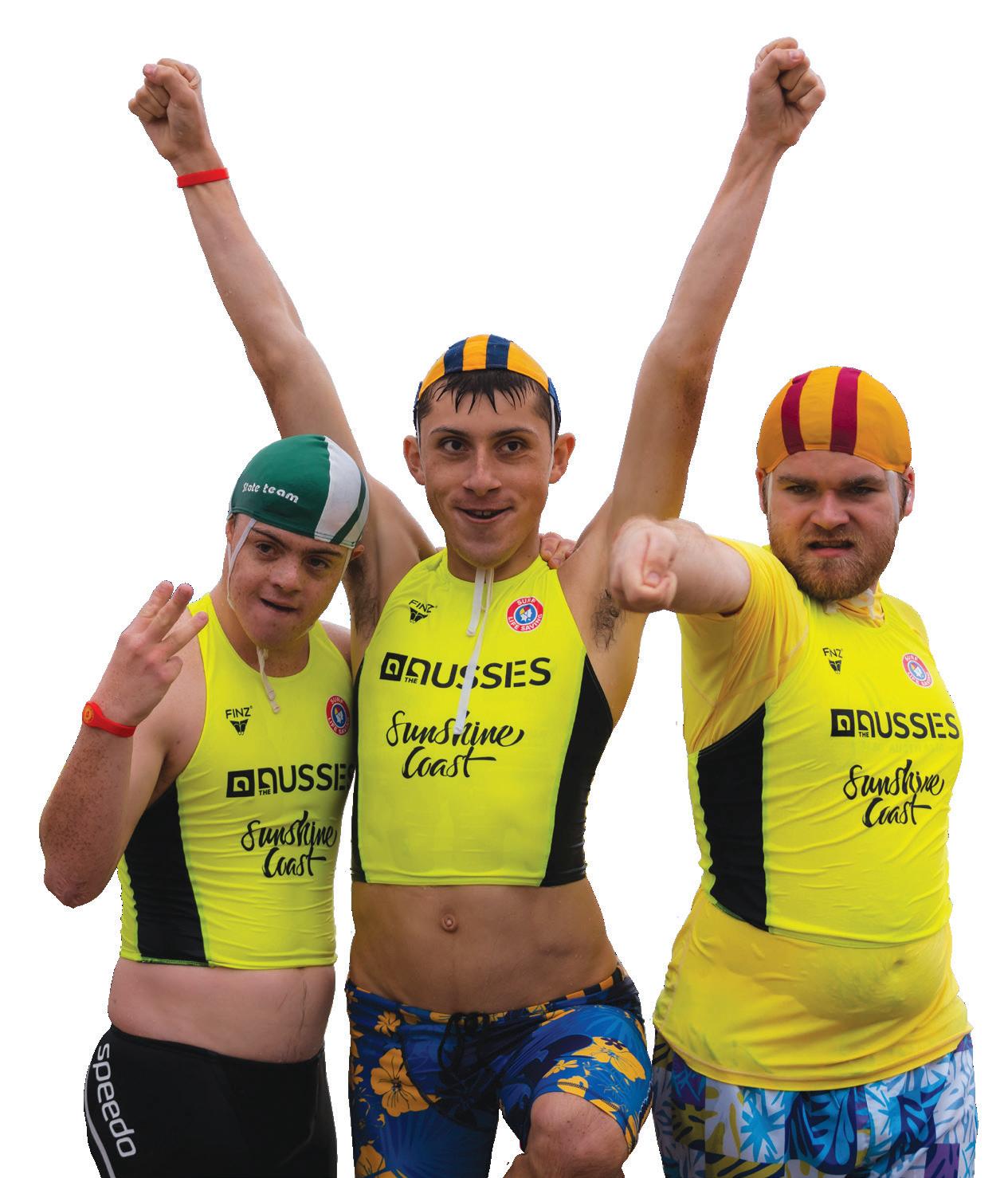
By embracing diversity and fostering an inclusive environment, SLSA can enhance operational effectiveness, strengthen community ties, and improve water safety outcomes, benefiting both the organisation and the broader Australian society.
•
•
The following milestones highlight SLSA’s ongoing commitment to fostering an inclusive and diverse environment over time.
SLSA’s Beach to Bush program, a roadshow of Surf Life Savers travelling thousands of kilometres across Australia to deliver Beach to Bush to over 50,000 students. Since the program commenced in 2004 over 350,000 students have received critical beach safety messaging from qualified life savers.
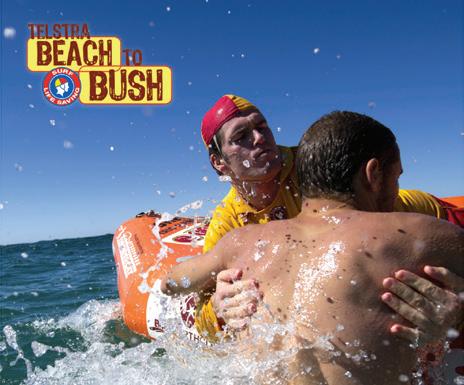
Women were officially accepted to become active patrolling members. This was a significant milestone for gender inclusion in Surf Life Saving Australia, breaking a longstanding tradition of male-only membership.

SLSA launched the Indigenous Engagement Program to increase the participation of Aboriginal and Torres Strait Islander peoples in surf life saving activities. Including programs that promoted water safety and lifesaving skills within Indigenous communities.
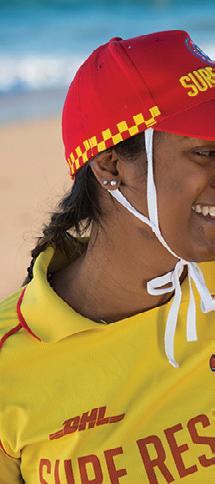
On the Same Wave program is the flagship multicultural water safety program in Australia. Developed in 2006, the program was developed as an accessible option for multicultural communities to learn surf safety and to encourage involvement in Surf Life Saving.
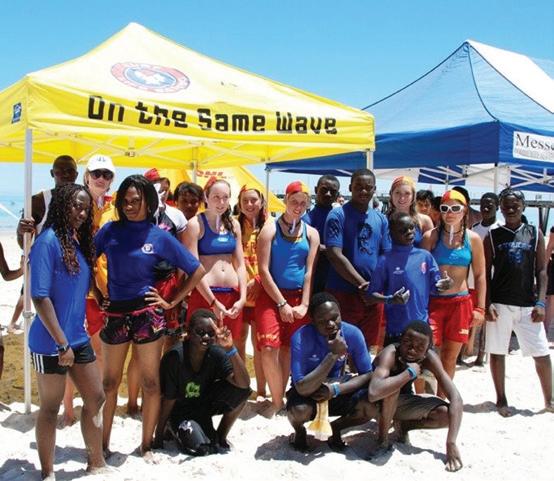

Disability
Inclusive Beaches
The Inclusive Beaches was introduced surf life saving clubs environments are people with disabilities. includes providing facilities and specialised such as beach wheelchairs.


Disability Inclusion -
Inclusive Beaches
Inclusive Beaches initiative introduced to ensure that saving clubs and beach environments are accessible to disabilities. This providing accessible and specialised equipment beach wheelchairs.
SLSA released its formal Diversity and Inclusion Statement, outlining its commitment to fostering an inclusive environment that respects and values diversity across all levels of the organisation.
SLSA became a member of the Pride in Sport program, which supports LGBTQIA+ inclusion in Australian sports. This membership involves implementing policies and practices that ensure a safe and inclusive environment for LGBTIQA+ members and participants.

In 2016 the SLSA Board endorsed a Member Protection Policy bound on all members and SLS entities. This Policy aims to assist SLSA to uphold its core values and create a safe, fair and inclusive environment for everyone associated with SLS. Adaptions to the policy over the years strengthened the protection of all members particularly those with protected characteristics under the law.


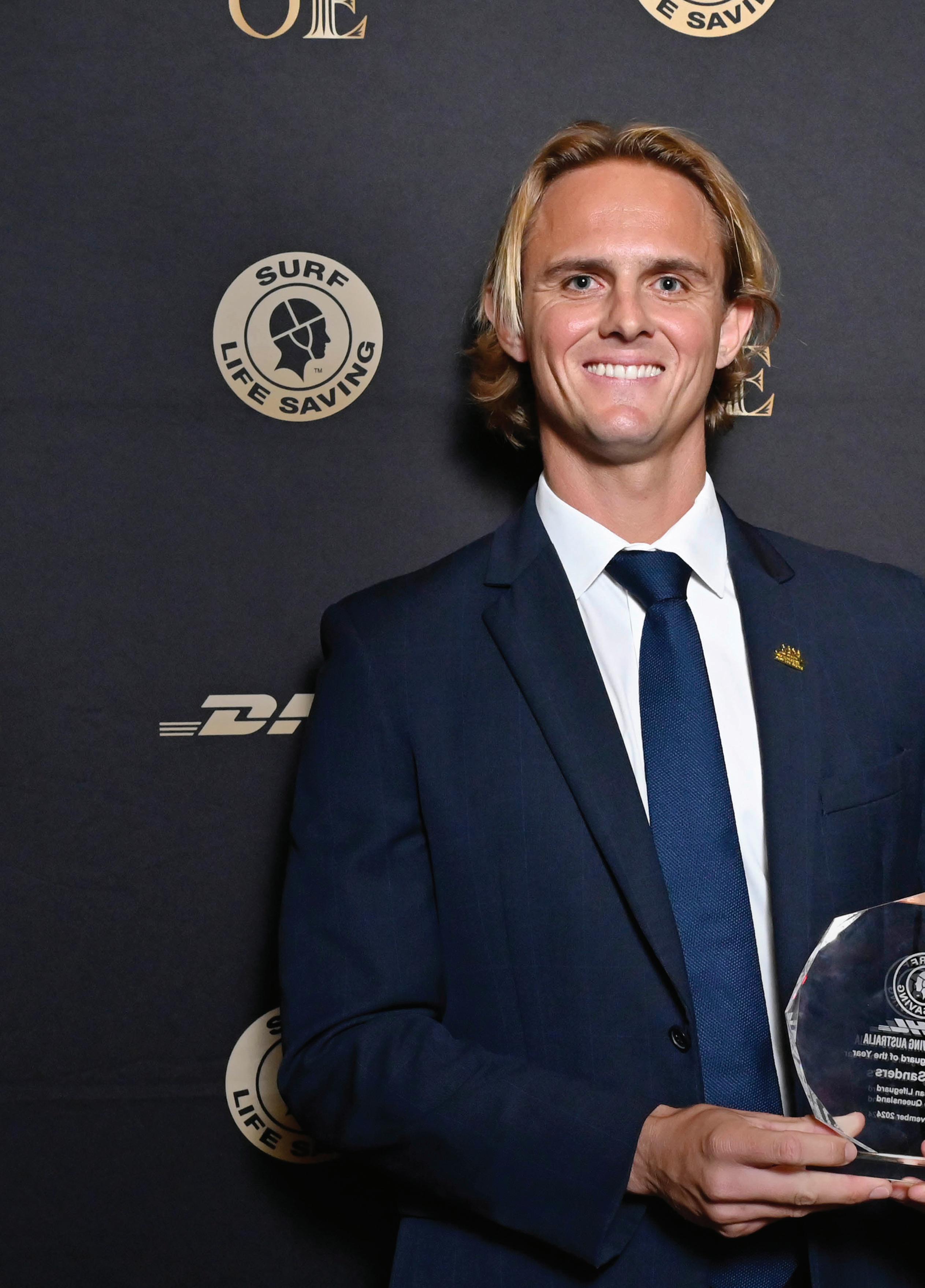
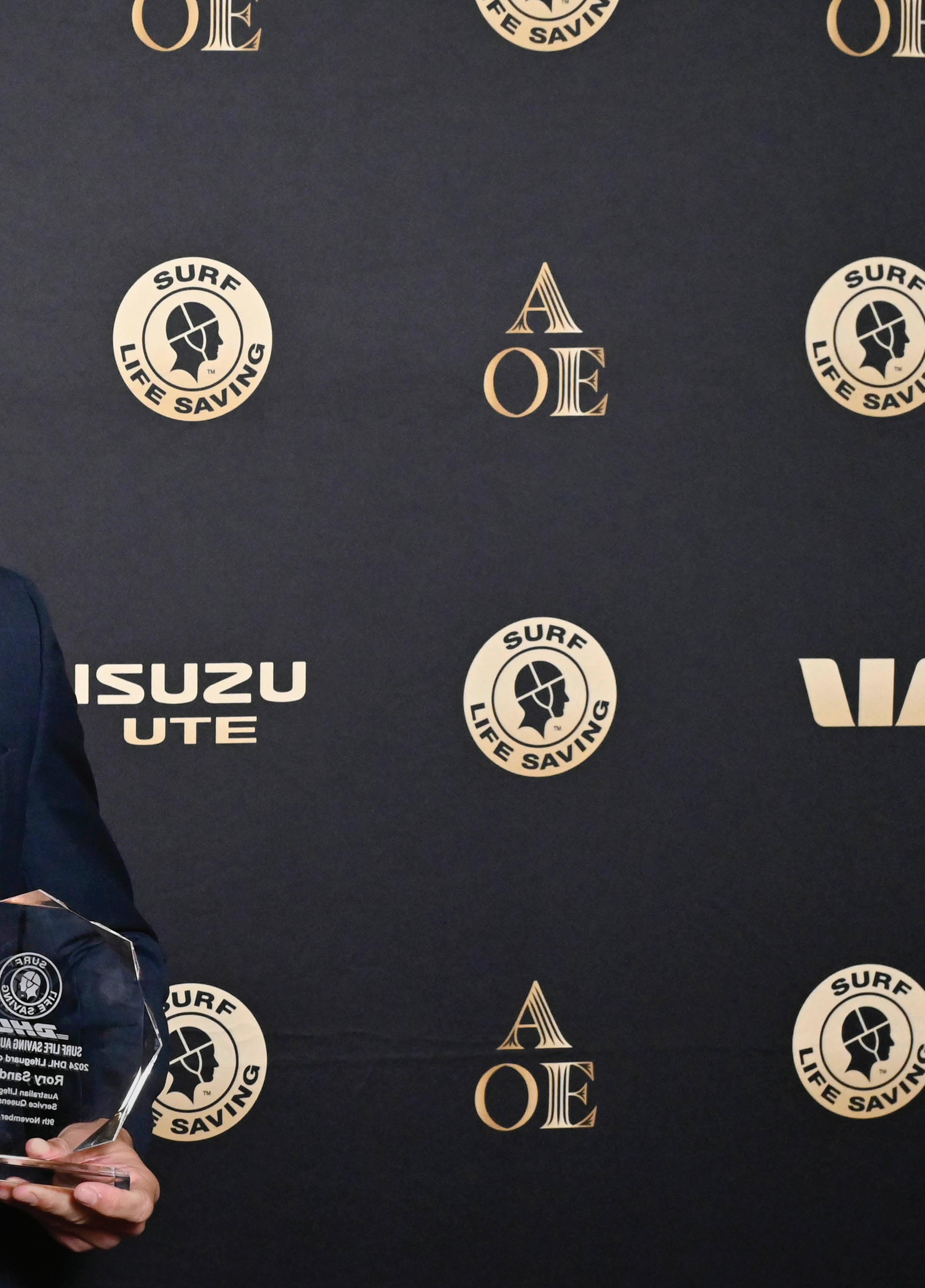
In the competitive world of beach safety, Rory Sanders was recently announced as the DHL Lifeguard of the Year for Surf Life Saving Australia. He is currently based in Rainbow Beach as a permanent Lifeguard, Drone Pilot, and Auxiliary Fireman. Rory has been recognised and praised for his exceptional vigilance and commitment to public safety as his contributions go well beyond routine patrols. In addition to lifesaving duties, Rory is also a talented photographer, capturing the beauty of Arctic Regions and Coastal horizons.
Rory’s passion for Surf Lifesaving began as early as 7 years old where he became a nipper at the Noosa Heads Surf Life Saving Club. “My parents encouraged my brother and I to join and gain valuable experiences with water safety as well as other lifelong skills such as CPR and basic first aid.” After finding his love for the ocean, Rory soon began patrolling for Noosa Heads as soon as he was old enough to do so. “During this time, I gained a sense of what it was like to patrol the beach, and this sparked the passion to pursue a future career in Lifeguarding.”

After finding his passion and undergoing extensive education and training, Rory became a full-time certified Lifeguard. Out of the many memorable rescues he has performed, Rory recently was involved in a multiple person rescue off a remote, unpatrolled area. Many people aren’t aware of how challenging performing a rescue of this nature by yourself would be. “I left that incident knowing if I hadn’t been there, two fatalities would have likely occurred.”
To avoid near fatal rescues like this, Rory shared his main piece of advice for beachgoers to remain safe at our beaches. “Always swim to your ability and in a patrolled area in between the red and yellow flags, read and follow Lifeguard and lifesavers instructions, involve your child into nippers, it provides them with crucial water safety skills for life.”
Aside from the tough rescues and intense training, Lifeguarding has allowed Rory to thrive in the realm of leadership and mentoring. Being able to share his expertise and experience with up-and-coming Lifeguards has been such a rewarding moment for him.
“I love the sense of working in a team and working toward achieving a desired outcome to the best of our ability.”

During his time as a nipper and lifesaver, Rory picked huge passion and “fell in love with capturing images”. Norway, capturing the Aurora Borealis”. He soon place to encapsulate the beauty of the “dramatic In and amongst his busy schedule as a Lifeguard, Rainbow Beach/Fraser Island. “I’ve been taking water housings, and a normal DSLR to capture images

‘’I have dedicated many nights towards putting to be a masterpiece and inspires others to get
I have dedicated many early mornings and late nights masterpiece and a legacy that I hope inspires others Rory’s natural desire to motivate and inspire people as this year’s award recipient. His tips for pursuing gear you’re using. Get out, explore, and take thousands perfect. Enjoy the process and the photos will come!”
Rory picked up a camera in 2016 where he developed yet another images”. His first few photographs were taken “in the top of soon came to realise that the Arctic Regions were his favourite “dramatic weather and huge changes in seasons”.
Lifeguard, Rory is currently working on a book for his local region of taking photos here for the last 5-6 years using helicopters, drones, capture images that have not yet been documented for the most part.

many early mornings and late putting together what I aspire
masterpiece
and a legacy that I hope get out and explore.”
late nights towards putting together what I aspire to be a others to get out and explore.”
people through his work is one of the many reasons he was chosen pursuing a career in photography are to “not get caught up in what thousands of photos. Just like anything in life, practise makes come!”
So, what is next for our DHL Lifeguard of the Year?
As much as Rory loves his current role as a permanent Lifeguard, Drone Operator, and Auxiliary Fireman, he is someone who strives towards continuously bettering himself and learning as much as he can to give back to the community. That said, he hopes to “keep building on my resume of qualifications and start to instruct others in Lifeguarding/Drone Operations.” On top of this, Rory is also currently enrolled in additional Cert IV Training and Assessment courses, as well as further studies with Drones.
Rory consistently exemplifies what it means to be a dedicated and humble role model in our community.
“It’s a huge honour, so many others I feel were also deserving of this award due to the amazing work each and every one does!” This statement really reflects Rory’s character as he continuously acknowledges the collective efforts of his fellow Lifeguards while putting in the hard work to excel in his own role. His unwavering commitment to safety, education, and community service not only sets a high standard for his peers but also inspires future generations of lifeguards (and photographers). Rory’s recognition is a testament to his remarkable dedication both on and off the beach, where he truly embodies the spirit of excellence that this award represents.
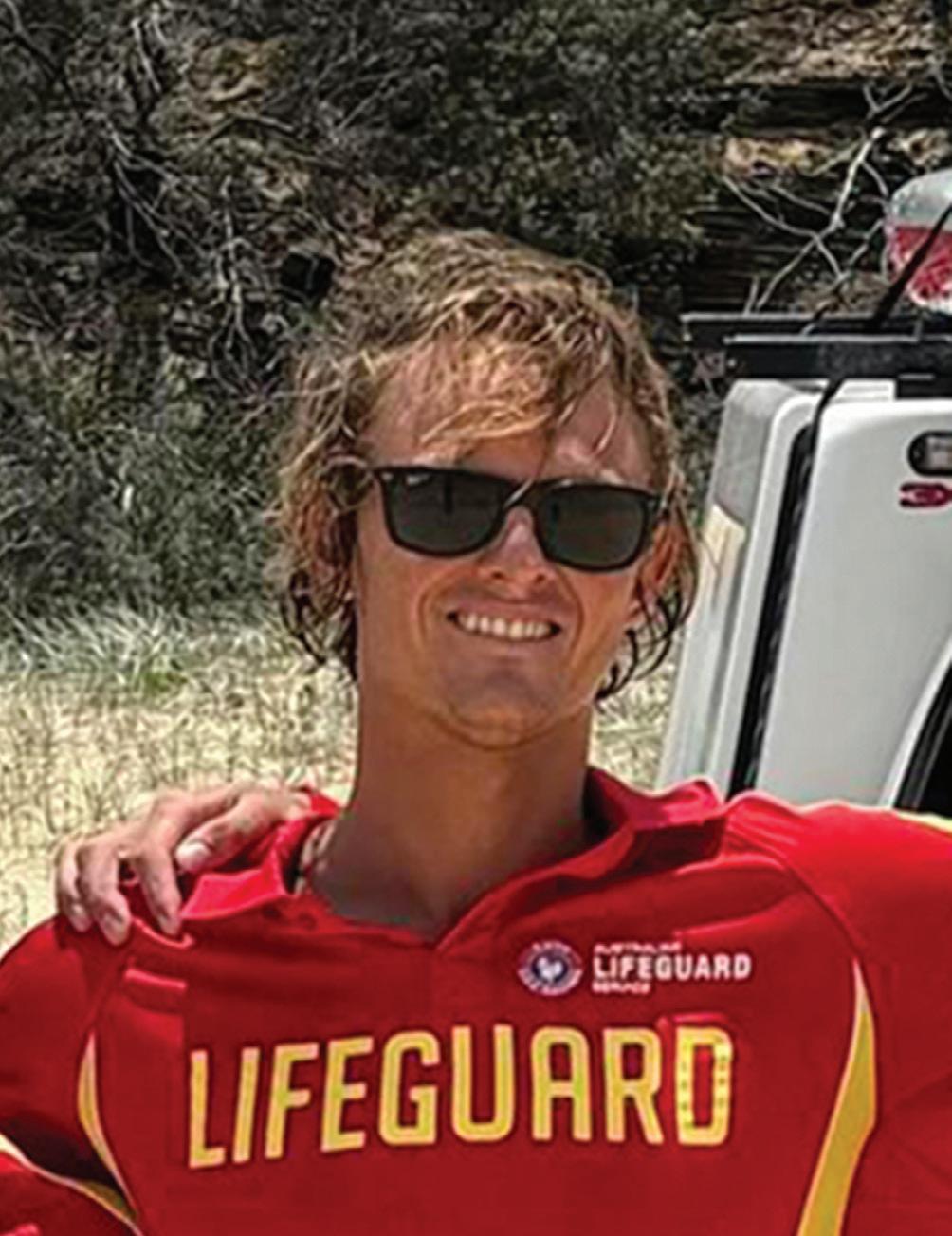

Lily Murphy has excelled as a supervisor in the Ballina/Richmond area, demonstrating strong leadership during major incidents and serving as a mentor to developing lifeguards. Her supportive approach has inspired others, and she has been instrumental in organising initiatives such as a female RWC course with 20 participants. Lily’s positive attitude and ability to engage others have made her a role model within the lifeguard community.

In just her second year as a lifeguard, Jasmine Noorman has become a standout leader while providing services at busy locations like Secret Harbour and Penguin Island. She has built positive relationships with emergency services, rangers, and beachgoers, showcasing professionalism and a proactive approach. Jasmine excelled under pressure during a mass rescue, coordinating efforts and ensuring everyone was safely brought to shore. Her passion for lifesaving and high standards have set an example for others to follow.

Finn Dripps has demonstrated adaptability and leadership as a lifeguard and team leader, inspiring new lifeguards and sharing knowledge to build their skills. He has taken on challenges, including managing major events with over 800 swimmers, and coordinated numerous rescue incidents. Through his foresight, Finn has enhanced public safety, increased community awareness, and empowered his team to excel in lifesaving.
PREVIOUS WINNERS – LIFEGUARD OF THE YEAR
2023 Mariah Jones, NSW
2022 Reece Dobbin, NSW
2021 Isaac Smith, QLD
2020 Corey Jones, QLD
2019 Grace Lightfoot, VIC
2018 James Turnham, NSW
2017 Ramon ‘Max’ Pettigrove, QLD
2016 Shane Bevan, QLD
2015 Luke Plant, VIC
2014 Timothy Wilson, QLD
2013 Tim Daymond, NSW
2012 Daniel Sullivan, VIC
2011 Scott McCartney, NSW
2010 Lleam Rees, QLD
2009 Lachlan Holbery-Morgan, VIC
2008 Mark Young, NSW
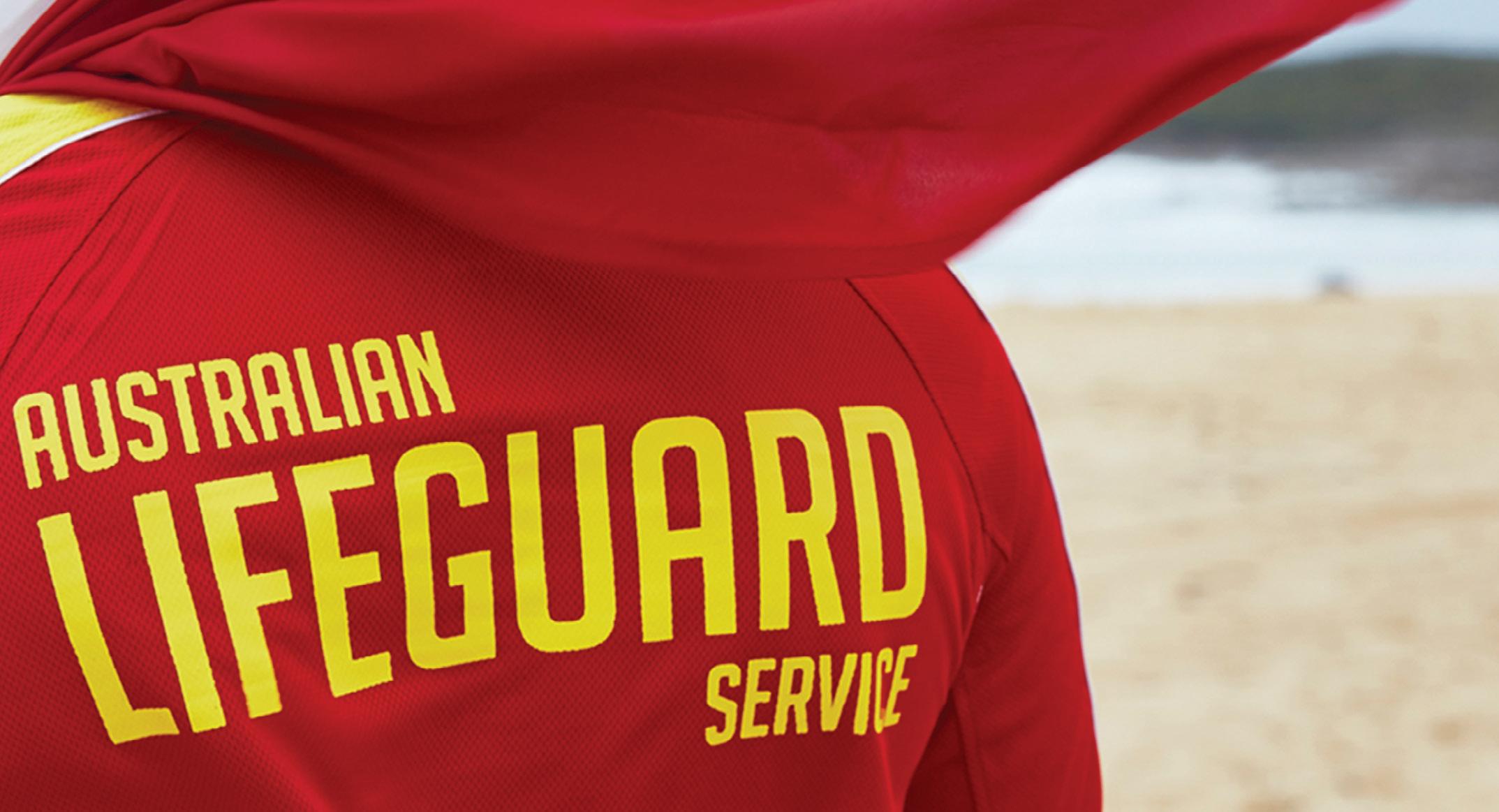

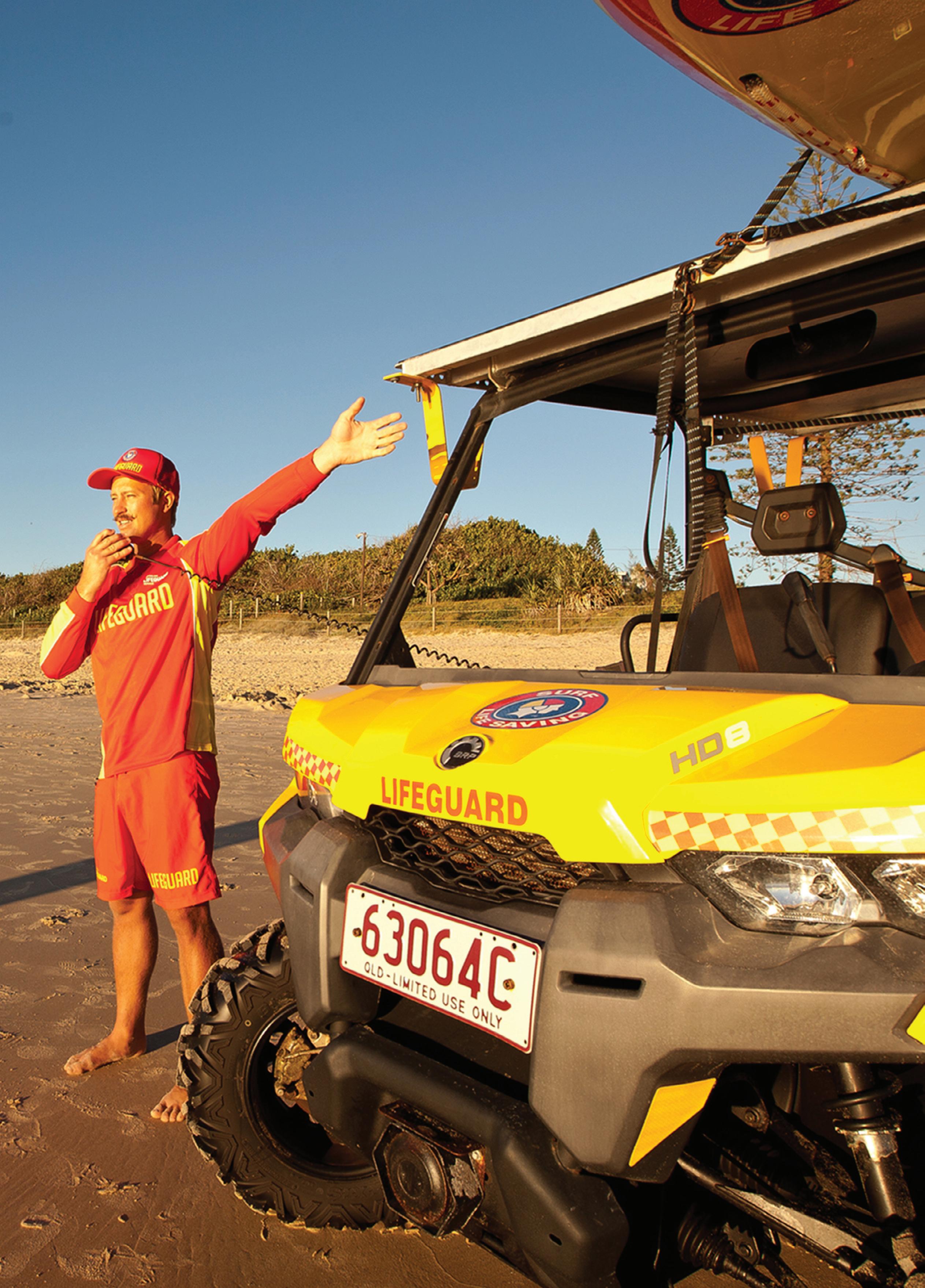
For many, becoming a lifeguard is more than just a job—it’s a calling. Marking his 10-year anniversary as a lifeguard, Mitch reflects on the journey that began with inspiration from a friend and mentor. That friend, MJ, is a now-retired lifeguard whose passion for the role and leadership within the lifesaving community left a lasting impression. “I was looking for a career change, and MJ asked if I’d be interested in lifeguarding. The way he talked about the role with passion and how people looked up to him as a leader is what inspired me.” That initial motivation was just the beginning of a lifelong commitment to saving lives and helping others.

In a career dedicated to public safety, there are inevitably challenging moments. For many lifeguards, the most memorable experiences are also the most confronting. “The most memorable incidents I have, unfortunately, are the ones that can play on your mind for many years,” he shared, “Surf Life Saving Queensland has created a network of Peer Support Officers and Counselling Services that have helped many people through those tough times.” This kind of support plays a critical role in helping lifeguards process difficult experiences while continuing their vital work.
After years on the beach, it’s not just the rescues that stand out but also the opportunity to help mentor new lifeguards. “The thing I find most rewarding is helping develop new and upcoming lifeguards. When you can visually see a lifeguard’s confidence, skills, and who they are as a person grow, it gives me great pride. Especially when they use those skills in major incidents.” Lifeguarding is a profession that demands continuous learning, and being able to pass on knowledge and see it applied in critical moments is deeply rewarding.
“Working on single-lifeguarded beaches has always had its challenges, and it’s the reason we train so hard and work on our skills,” he said. Over the past decade, he’s witnessed a significant increase in the number of beach visitors, particularly from overseas tourism, which has added complexity to beach management. “At times, it can be difficult to manage the increased number of visitors to the beach,” he noted, highlighting the growing demand for vigilance and adaptability in today’s beach environments.
Being a lifeguard requires not only physical fitness but also mental resilience. For this experienced professional, staying in top shape involves a balanced approach. “Fitness and diet play a huge role for me to stay mentally and physically fit. Having hobbies like surfing and golf help enjoy life.” But the most significant support comes from his personal life: “The biggest thing for me mentally is having a supportive wife who has always been there for me.” Lifeguarding can be
demanding, and having strong support systems, both personally and professionally, is key to thriving in the role.
The skills and lessons learned from a career in lifeguarding extend far beyond the beach. For this lifeguard, those skills opened the door to another life-saving profession—firefighting. “Lifeguarding gave me transferrable skills that helped me become a firefighter, another job that I thoroughly enjoy.” The quick decision-making, physical stamina, and mental toughness required for lifeguarding are invaluable in many other aspects of life.
For anyone starting their career within Lifeguarding, his advice is simple: “Take your job seriously, ask questions, and have fun. We have the best job in the world, but at the end of the day, we put our lives at risk for the public and are responsible for their safety.” Lifeguarding is not just a profession—it’s a role of immense responsibility, and those stepping into it need to embrace both the seriousness and joy that comes with the job.
As Mitch Yates celebrates 10 years of dedicated service as a lifeguard with Surf Life Saving Queensland, we want to take a moment to thank him for his unwavering commitment to keeping our beaches safe. His passion for lifesaving, mentorship of new lifeguards, and ability to stay calm in even the most challenging situations have made a significant impact on our community. Mitch’s contributions over the last decade have been invaluable, and we are grateful for his continued service. Here’s to many more years of safeguarding our coastline—thank you, Mitch!
1. What inspired you to become a lifeguard, and how has that motivation evolved over the years?
Loved the beach had knowledge of North Stradbroke Island and wanted to share that knowledge. It’s a beautiful lifestyle I love right now plus helping new recruits out and making them become a better lifeguard is rewarding.
2. Can you share a memorable rescue or experience that stands out in your career?
Saturday 25th of February 2023 jumping into north gorge and rescuing a little girl. Doing CPR on the back of a jet ski and beach and her surviving and being able to see her thriving 6 months later. It was a deadset miracle.
3. What do you find most rewarding about being a lifeguard after all these years?
Being active at the beach in the ocean, meeting people, facing challenges and overcoming those.
4. What advice would you give to new lifeguards starting their careers with Surf Life Saving Queensland?
Upskill, do scenarios practice on boards and on the Rescue water crafts.
5. How do you stay physically and mentally prepared for the demands of the job?
Surf, gym be active. When stuff goes down don’t think, just act
6. Are there any skills or lessons from your work as a lifeguard that have influenced your life outside the job?
Yes definitely being able to read the ocean and be in the best spot for the best waves when I am not working ha!

Mariah Jones’ journey in surf lifesaving began as a young Nipper, learning the ropes under the guidance of her father, who served as both her age manager and swim coach. From those early days navigating the waters of Greenmount to becoming a senior lifeguard and supervisor for the Australian Lifeguard Service (ALS), New South Wales, Mariah’s career has been shaped by passion, determination, and an unwavering commitment to safety and inclusion.

For Mariah, the red and yellow represents more than just a uniform, it’s a symbol of service, responsibility, and community. Her early experiences in Surf Lifesaving naturally transitioned into a professional career as a lifeguard, where she found herself expanding her network, meeting people from all walks of life, and fostering relationships with both the public and her peers.
“Lifeguarding felt like an extension of lifesaving,” she explains. “It wasn’t a huge shift, just another way to keep doing what I love, staying on the beach, meeting people, and making a difference within the community.”
Her dedication to the field was recently recognised with a 10-year patrol service medal, an achievement that highlights her long-standing commitment to keeping Australia’s beaches safe.
Mariah’s journey from a volunteer lifesaver to a supervisor was influenced by key mentors, including her father and experienced lifeguards who saw her potential. “It was a little nerve wracking at first, stepping into a leadership role,” she admits. “The responsibility of being in charge of a team, making decisions in high-pressure situations was a lot to take in. But I’ve grown to love it.”
As the first Indigenous and female Tweed Lifeguard Supervisor, Mariah has broken barriers, setting an example for future generations. “I hope that seeing someone like me in this role helps others feel comfortable stepping up,” she says. “If you can see it, you can be it.”
Her leadership style is built on approachability and support, especially for younger lifeguards finding their place in the profession. “I love helping people come out

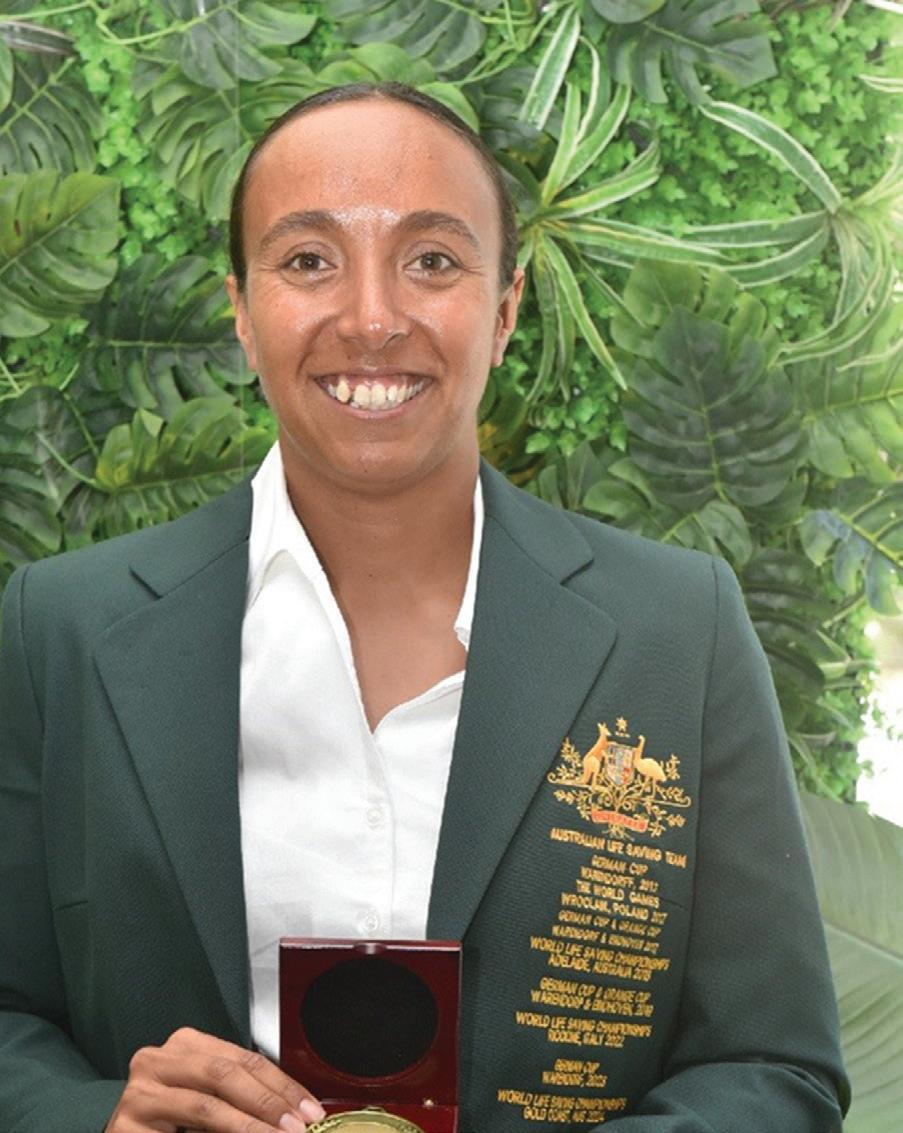


of their shells. It’s important to create a space where everyone feels confident to learn and grow.”
Beyond her work on the beach, Mariah has represented Australia in the National Lifesaving Team and the Commonwealth Lifesaving National Team, earning medals at the Australian Titles and competing against the best in the sport. “It took a lot of persistence to break into those teams,” she shares. “It’s not easy, but the hard work is worth it.”
Even with years of experience, she
“It took a lot of persistence to break into those teams,”
acknowledges the challenge of staying at peak performance. “The motivation to race is always there, I love it. But the training required to compete at this level is intense. Now that younger athletes are coming through, it’s even harder to maintain that edge. But I thrive on the competition and the friendships I’ve built along the way.”


Mariah is a vocal advocate for diversity in surf lifesaving, actively encouraging more women and Indigenous Australians to get involved. “I’d love to see more representation,” she says. “Surf lifesaving is such an inclusive community.”
“Sometimes, people just need that little push. If someone’s interested, I’ll be the first to tell them, ‘Go for it! You can do this!’
Mariah’s impact extends beyond Australian shores. Through the ALS International Training Tour, she has trained over 120 lifeguards in Vietnam, helping to strengthen global water safety. “The lifeguards over there are incredible,” she says. “Their preventative actions are next level, and their ability to keep people safe is outstanding.”
Mariah has embraced the opportunity to return to Vietnam multiple times, working with the program’s
founder, David Field, and forming strong bonds with local lifeguards and communities. “It’s amazing to share knowledge, but it’s also a learning experience for us. Every culture has its own approach to water safety, and working together only makes us stronger.”
Mariah’s passion for lifesaving shows no signs of slowing down. She’s gearing up for another trip to Vietnam and has been selected for a World Games trial in China, with hopes of competing in the official event later this year.
For those looking to follow in her footsteps, her advice is simple: “Ask questions. Take the opportunities. If you don’t ask, you won’t know what’s possible. And most importantly, take the risk—it’s worth it.”
Mariah Jones is not only a leader on the sand but a role model in the surf lifesaving community, proving that with determination, resilience, and a passion for helping others, anything is possible.

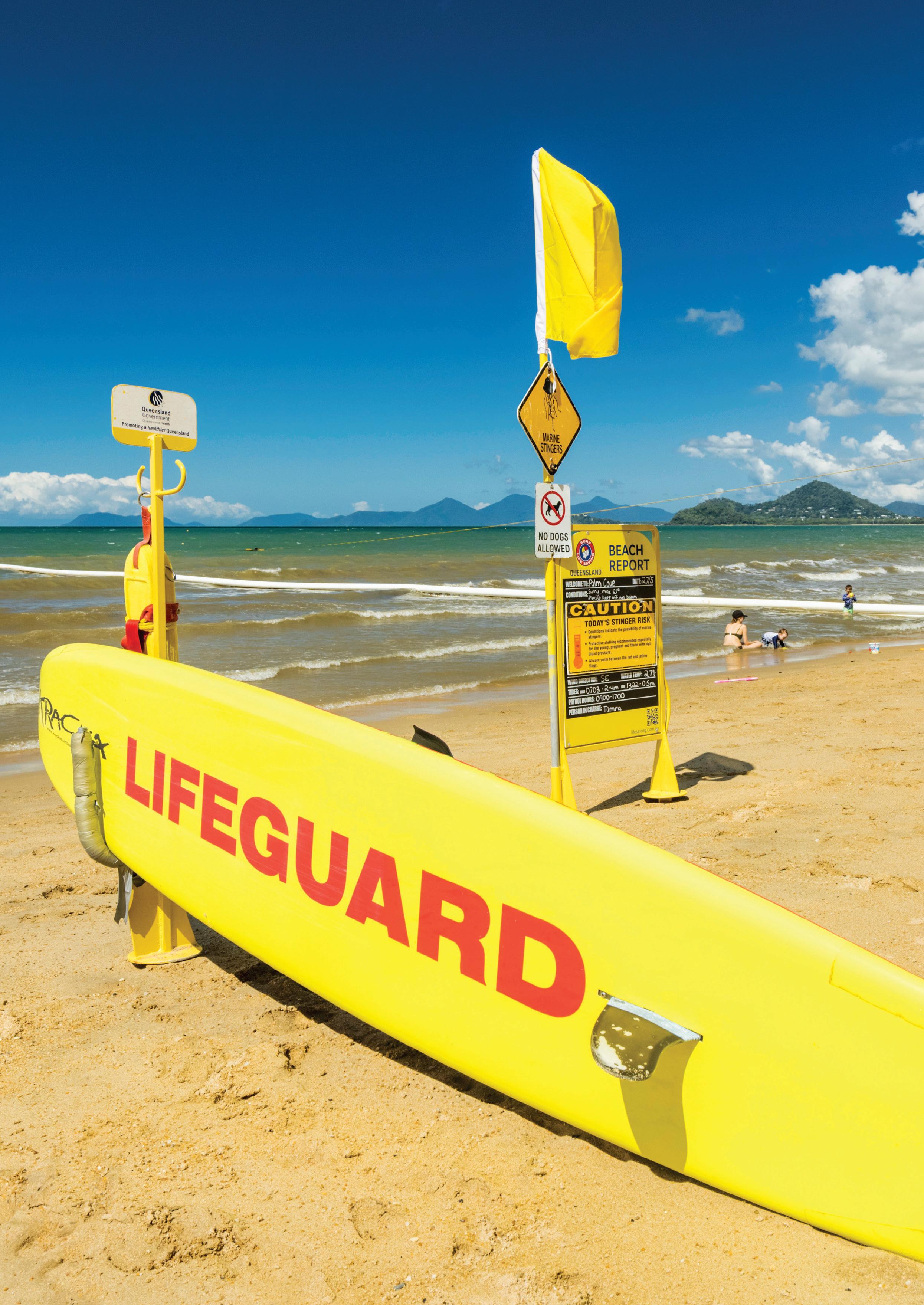
For Jackson Blom, lifeguarding is more than just a profession—it’s a lifelong commitment. With 15 years of experience in Surf Life Saving Western Australia and four seasons as a professional lifeguard, Jackson has honed his expertise in coastal safety, rescue operations, and lifeguard training. His deep understanding of Western Australia’s diverse beach environments makes him a highly skilled and adaptable lifesaver and lifeguard.
Beyond his work on the shoreline, Jackson is an integral part of the Westpac Lifesaver Rescue Helicopter Service, conducting coastal surveillance and search-and-rescue operations. His role in aerial patrols enhances beach safety by providing critical early detection of hazards and supporting ground teams during emergencies.



Jackson is also passionate about developing the next generation of lifeguards. As a key facilitator of the Rookie Lifeguard Program, he trains aspiring professionals, equipping them with the skills and knowledge needed for the challenges of the job. In addition, he has taken on an operational supervision role, assessing, and mentoring current lifeguards across metropolitan and southwest beaches.
While balancing his demanding lifeguard career, Jackson is in his fourth year of full-time studies at the University of Notre Dame, pursuing a degree in Health, Outdoor, and Physical Education. His academic background complements his practical experience, further strengthening his ability to educate and lead within the lifesaving community.
Spending the last two years patrolling Yallingup and Margaret River, Jackson has mastered the complexities of Western Australia’s dynamic surf conditions. His ability to read shifting tides, manage large swells, and respond swiftly to emergencies underscores his extensive skill set.
His experience has been put to the test numerous times, including multiple rescues in challenging surf conditions. Whether pulling struggling swimmers from powerful rips or assisting in medical emergencies onshore, Jackson’s quick thinking and expertise have made a tangible difference. Whether in the air, on the sand, or in the surf, Jackson’s dedication to lifesaving, professional lifeguarding, training, and education ensures he remains at the forefront of his field. r

Could you introduce yourself and share how you got into lifeguarding?
My name’s Noah, and I’m from Perth, Western Australia. Before becoming a lifeguard, I was involved in my local surf club. I saw some of my mates working on the beach as lifeguards, and they encouraged me to give it a go. I thought, Yep, that looks all right, so I applied.

You have a pretty impressive background in elite sport. Could you share a bit about that?

Yeah, my dad got me into a kayak when I was about seven years old, and I’ve stuck with it ever since. I’ve been fortunate enough to represent Australia at the Sprint Kayaking and Marathon Kayaking World Championships and held a WA Institute of Sport scholarship for three years. I’ve trained and competed around the world in a range of kayaking disciplines, including sprint kayaking, marathon kayaking, ocean ski paddling, whitewater kayaking, and surf lifesaving.
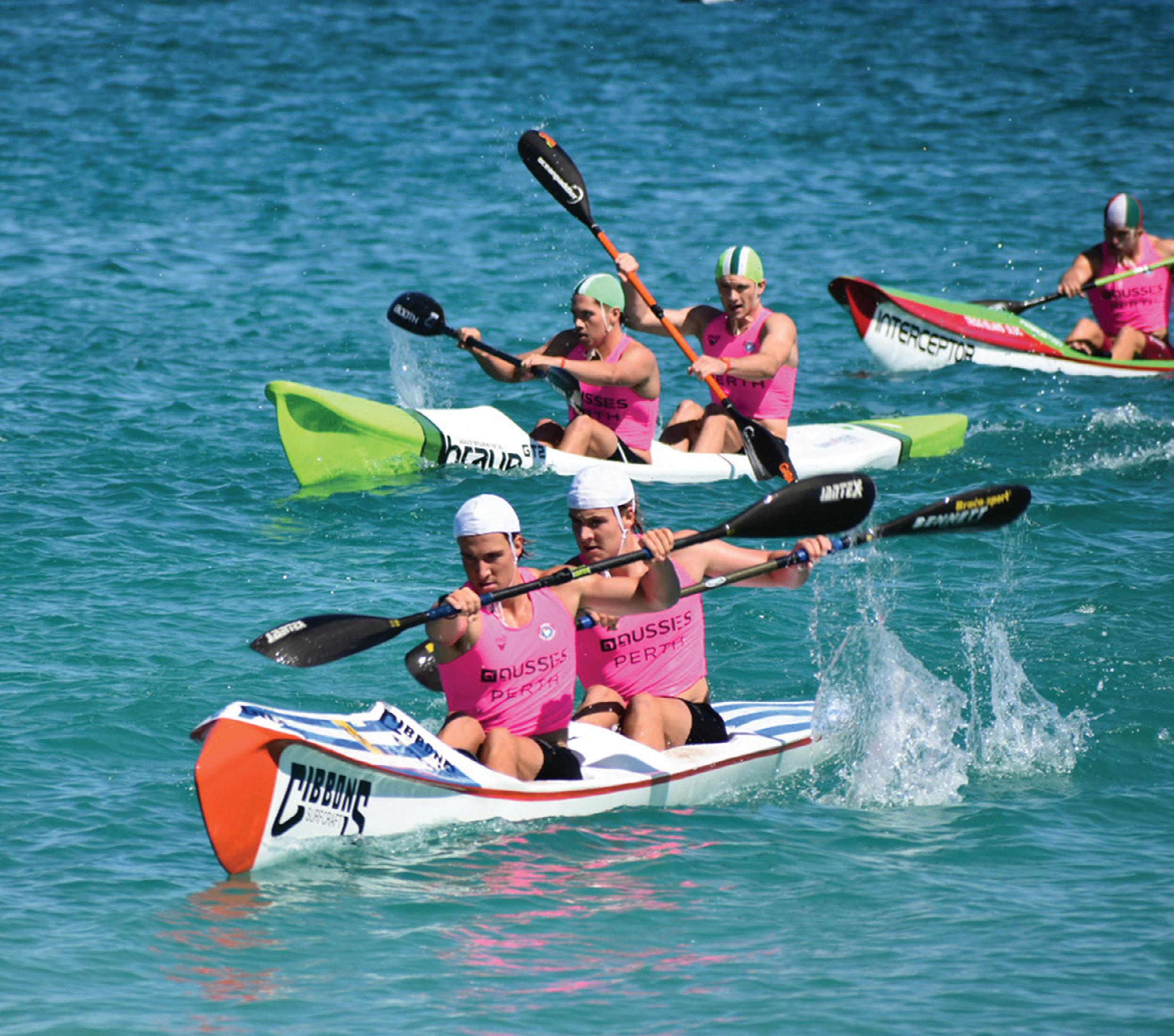
standout moments or scenarios?
Working down in Denmark, we get a fair bit of action. The area is exposed to a lot of raw ocean swell, making for a challenging environment with plenty of hazards. I’ve really enjoyed putting my skills to the test in these situations. We rescued a lot of kids this summer, and I think any time you bring a child back to the beach and reunite them with their parents, it’s a pretty significant moment. Responding to serious incidents always reinforces the importance of the lifeguard’s role.
What skills have you learned in elite sport that have translated to lifeguarding?
Coming from an elite sporting background, I always want to be the best I can be—whether that’s in kayaking or lifeguarding. When there’s an incident on the beach,
I want to perform at my absolute best. I apply the same elite training mentality to my skills in the surf, whether it’s swimming, running, or first aid. If you’re at your best when someone needs help, you’ll be able to respond more effectively and achieve the best outcome.
What advice would you give to an athlete interested in lifeguarding?
I’d say go for it. Lifeguarding is a great complement to an elite athlete’s career and has helped fund my racing ambitions. It’s an opportunity to develop new skills while staying fit, and it pairs well with an athletic pathway. Physical abilities like swimming, running, and paddling provide a great foundation for lifeguarding, and the mental resilience of an elite athlete is a huge asset when responding to emergencies. It’s rewarding to use your physical abilities to help people in real-life rescue scenarios.
Vittoria Farmer, a 26-year-old lifeguard, recently transitioned from a casual position to a full-time role within the Sunshine Coast region. Vittoria’s journey began in 2017 through her passion for surfing, influenced by fellow surfers who were also lifeguards. “It wasn’t something that I dreamt of, but when I started, I was like, oh, this is an awesome job. Without even knowing it, you’re transferring the skills developed through surfing and time in the ocean into the workplace. It’s very valuable.”
Vittoria’s lifeguarding career took her to the United Kingdom from 2021 – 2023. Despite the initial surprise of many regarding the concept of beach lifeguards in the UK, this experience was highly enriching, enhancing her skills and knowledge, which she brought back to Australia. “I was pretty naive to the influx of crowds you would get on British beaches…. you work
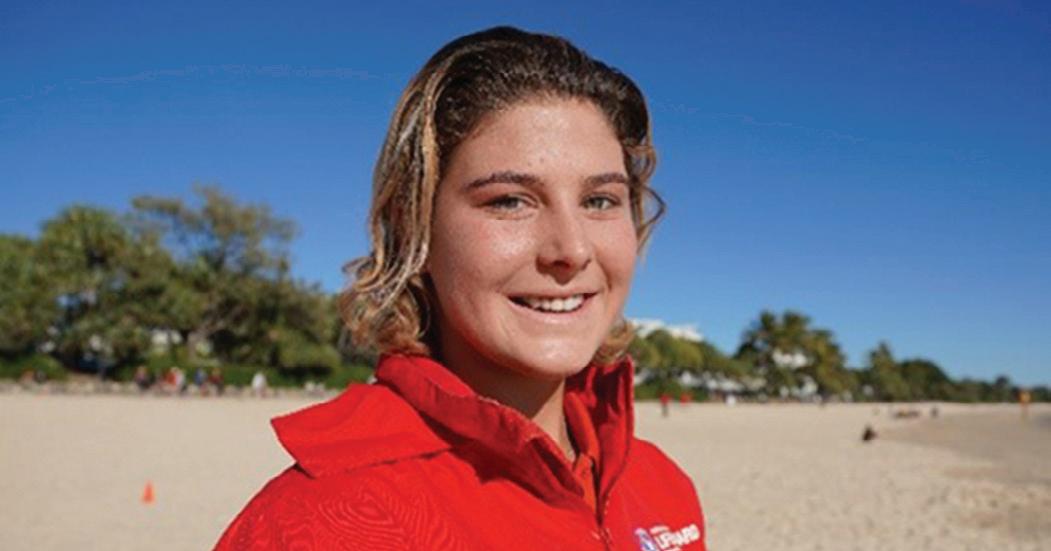
hard over there. It was great to have been exposed to a lot of experiences and be able to bring new skills and further training to Australia.”
“Working in Noosa is super fulfilling. It’s pretty amazing how many people visit throughout the year and it’s very special when you see returning visitors remember your name and ask how you’re going. As lifeguards, we provide important information regarding safety and local knowledge of the area. It’s warming contributing to a welcoming and informed community.”
While Vittoria has numerous impactful experiences, ranging from saving lives to reuniting people with lost valuables, she finds great reward in both significant rescues and small acts of assistance. “When you’ve literally saved someone’s life, I mean, that’s an incredible experience. Knowing they’re alive with their families because of your efforts.” These experiences collectively shape her career and highlight the importance of preventative measures and public education in lifeguarding.
Vittoria is passionate about her career and envisions herself lifeguarding for a long time. “You look at our lifestyle, it’s pretty awesome really. You’re working with a lot of like-minded people who also enjoy fitness and the outdoors. Lifeguarding provides that perfect balance of work and a healthy lifestyle.”
“The more I do it, the more I fall in love with it.”
Vittoria Farmer’s dedication to lifeguarding, enriched by her diverse experiences and passion for the ocean and surfing, makes her a standout member of the Surf Life Saving Queensland team.
“The more I do it, the more I fall in love with it.”


NSW Rescue Highlight: Wednesday 15 January 2025
Australian Lifeguard Service (ALS) lifeguards have resuscitated a young male at Mona Vale beach this morning after he was pulled from the water at the southern end of the red and yellow flags unconscious and not breathing.
At around 11.03AM on Wednesday 15 January the Surf Life Saving NSW State Operations Centre (SOC) was made aware of an incident unfolding on the Northern Beaches where Mona Vale ALS lifeguards requested an ambulance for a teenage male in distress.
The male was pulled from the water by his friends and lifeguards immediately responded, delivering CPR ahead of the arrival of paramedics. The male regained consciousness and began to breathe again before NSW Ambulance arrived.
He was taken from the scene by the CareFlight Rescue Helicopter.
Surf Life Saving NSW CEO, Steve Pearce praised the quick response from Northern Beaches lifeguards and said the incident was a timely reminder of the importance of swimming at a patrolled location.
Surf Life Saving NSW CEO, Steve Pearce praised the quick response from Northern Beaches lifeguards and said the incident was a timely reminder of the importance of swimming at a patrolled location.
“With hazardous surf predicted over the coming days this incident reminds us of the value that our volunteer lifesavers and lifeguards bring to the community,” he said.
“We wish the young man a speedy recovery and are pleased that lifeguards were able to respond so quickly and deliver the appropriate first aid to help him regain consciousness.”
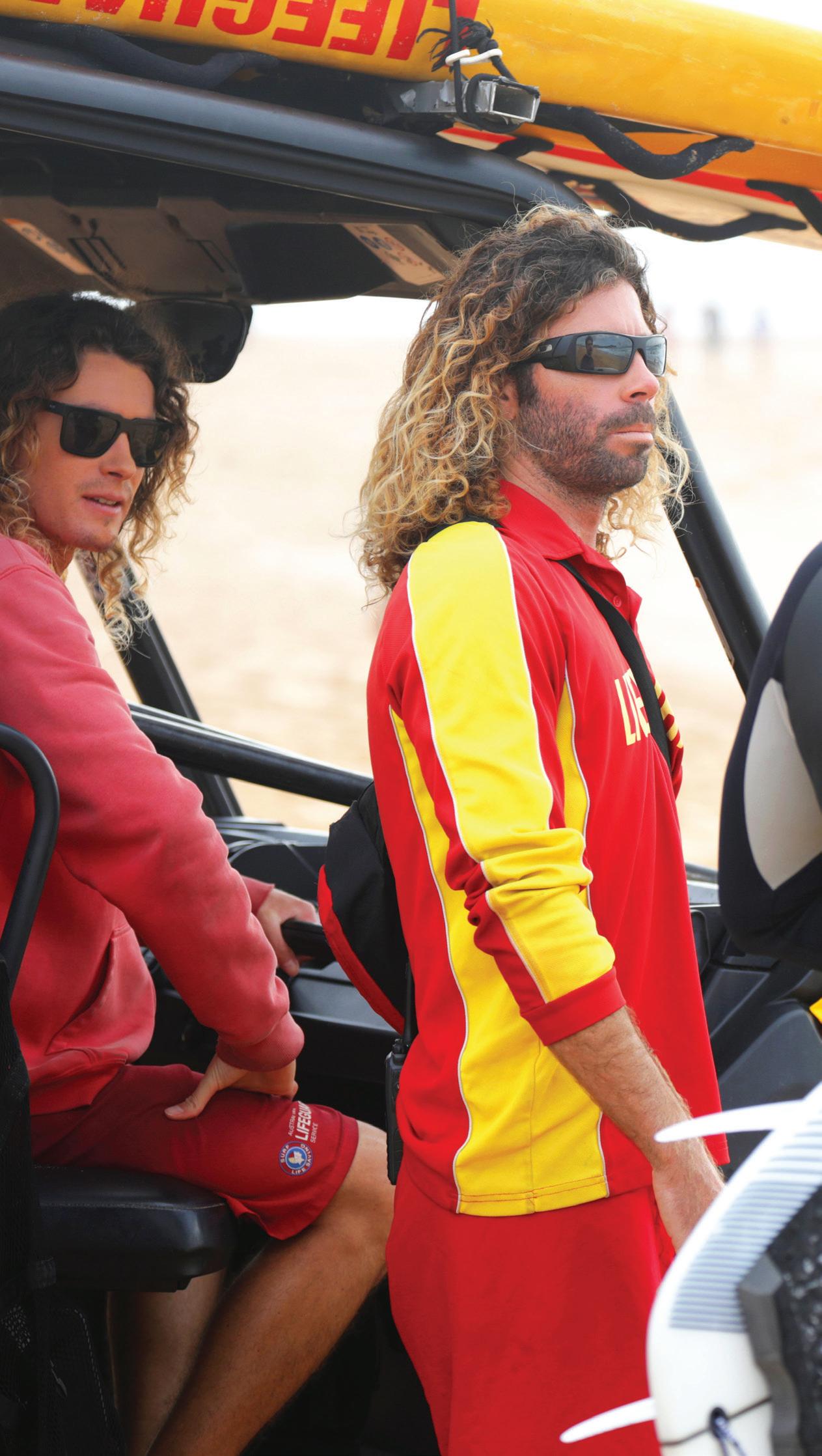


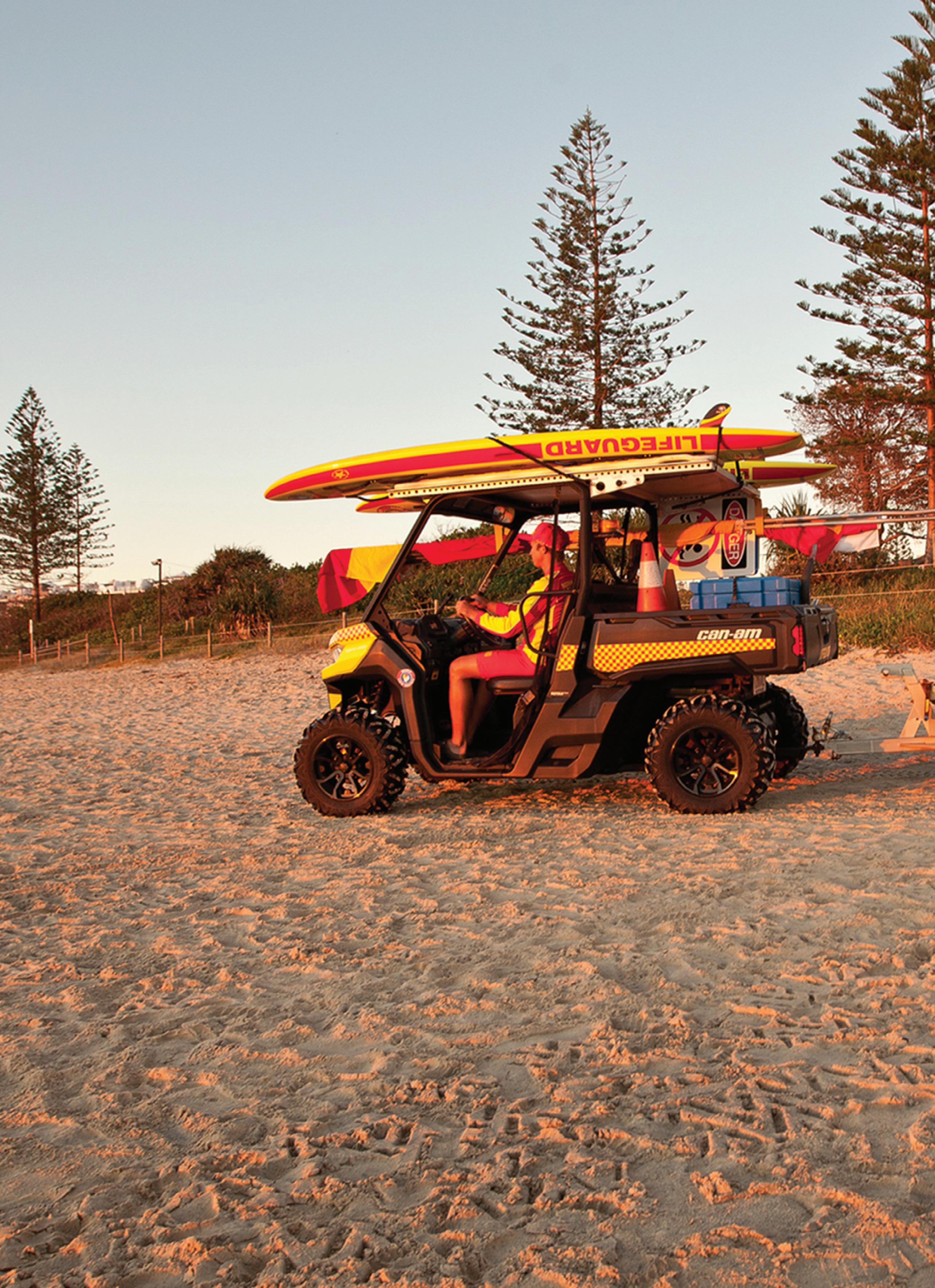

In 2007, to mark Surf Life Saving Australia’s 100th anniversary, a unique international exchange program was launched. This marked the beginning of a close partnership between Danish lifeguards from TrygFonden Kystlivredning (Surf Life Saving Denmark) and our experienced colleagues from Surf Life Saving Australia. From the outset, the goal has been clear: to strengthen the professional skills of lifeguards, exchange knowledge, and build lasting connections between two lifesaving cultures on opposite sides of the world.
The exchange program was introduced as part of the celebration of Surf Life Saving Australia’s long and proud history of water safety and lifesaving. It all began in 2007 when two Australian lifeguards visited Denmark, while two Danish lifeguards travelled to Australia.
Since then, the program has given Danish lifeguards the opportunity to train and work in Australia, side by side with some of the world’s most experienced lifesavers. Immersed in a deeply rooted lifesaving culture, Danish participants have gained unique insight into how lifesaving is structured and embedded in the community. At the same time, Australian lifeguards have visited Denmark and experienced a newer, yet focused and professional approach to lifesaving. For both sides, the exchange has offered valuable learning – especially for us in Denmark.
Australia boasts a comprehensive lifesaving culture, supported by hundreds of thousands of volunteers. In Denmark, the structure is different – we have built a professional, nationwide service, with Surf Life Saving Denmark as the leading organisation in the field. Despite the different approaches, there is much to learn from one another. Having the opportunity to send Danish lifeguards abroad to gain international experience and bring back new knowledge has been a major asset – both professionally and personally. It also allows us to showcase our focus on prevention, education, and professional lifesaving standards. Many lifeguards highlight the program as one of the most defining experiences of their careers. It’s not only about technical skills, but also about teamwork under pressure, communication across language and culture – and personal growth through exposure to a different lifesaving reality.

The exchange program has played an important role in the development of Surf Life Saving Denmark. Our first Danish beaches were staffed back in 1998, and we have always drawn inspiration from the knowledge and experience of countries like Australia. The exchange program has provided important input in helping us shape a professional and effective lifesaving service in Denmark – built on strong expertise, an international outlook, and a commitment to high standards from the beginning.
More than 15 years after its launch, the exchange is still going strong – and continues to grow each year. New generations of lifeguards have the opportunity to take part in this international cooperation, and the ties between Denmark and Australia only deepen with time. This summer, we look forward to welcoming around six international lifeguards to the Danish beaches – and when autumn arrives in Denmark, we hope that more of our own lifeguards will take the journey to Australia to further develop their skills and bring back new inspiration.
This collaboration reminds us that although oceans may separate us geographically, it is the very same ocean that connects us – especially when we come together in a shared mission: to save lives and to learn from one another.


Dr Natalie Hood
Areturn post-covid to face-to-face meetings brought personal connections, not always achievable via Zoom. At the 2022 ILS Rescue Commission meeting in Italy, SLSA Life Member Dr Natalie Hood met John Mogensen, Head of the Danish North Zealand (Nordsjælland) Lifeguard Association. Following a conversation around workforce shortages on the beaches north of Copenhagen, a plan was hatched to facilitate an exchange program between the Portsea and North Zealand lifeguards. Countries not typically known for their beach tourism can experience difficulties filling seasonal vacancies, and this gives an opportunity for southern hemisphere beach lifeguards to travel north in their off-season, where they can experience a lifesaving culture very different to their own.
In January 2023, the first Dane, Alex Mogensen (no relation to John) arrived in Melbourne to experience a jam-packed summer of holiday activities at Portsea, before travelling north to enjoy and explore the beautiful eastern coastline of Australia. Portsea is located on Victoria’s Mornington Peninsula, which is a sought-after work destination for local lifeguards. Despite having the opposite workforce problem to Denmark, and a surplus of summer lifeguards, Alex was able to gain experience as a paid Victorian lifeguard, employed as a ‘extra’ on hot day Portsea lifeguard patrols.
Six months later Portsea SLSC sent eleven lifeguards to Denmark. It turned into an adventure that none of them will forget, that has cemented their friendships for life. For three weeks, the Portsea crew, all on their July university break, lived together in a share accommodation, and each day dispersed across the 70km stretch of wooded coastline known as the ‘Danish Riviera’, where small fishing villages morph into packed hubs of summer tourism and activity for the month of
July. The Aussie lifeguards covered in excess of 200 shifts on the North Zealand beaches that season. They were a hit sensation with the locals and the Danish media, often featuring in news stories, both in print and on television, reporting on mass rescues and other remarkable incidents.
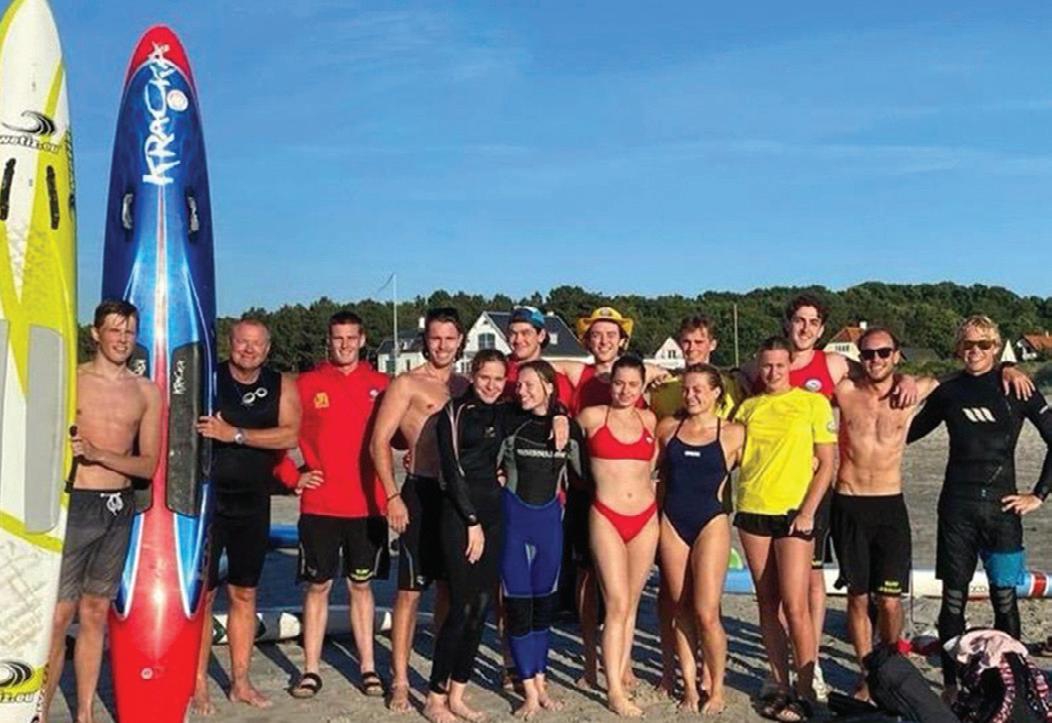
For the Portsea guards, the experience was totally different from home. They worked solo on the beaches, based at small portable huts, with some of the huts becoming saunas for a post-work detox! They learnt how the Danes are obsessed with knowing the precise water temperature each day, and that rips are known in Denmark as ‘hestehuller’ or ‘horse-holes’ – a reference to the Viking days where the reef was known as ‘horse’ and the gaps between the reef, where the water flowed out, as ‘horse-holes’. The days are long in the far north of Europe, with sunrise at 4am and sunset close to midnight, leaving many daylight hours for after work activities: beach volleyball, BBQ’s, enjoying local music festivals and training sessions with the Danish guards. On rostered days off the young adventurers took advantage of short-stop European travel. They jumped on ferries to Sweden, trained to Berlin or flew to Barcelona to party all weekend. The weeks were
exhausting but jam-packed with stories to tell back at their home base in Gilleleje.
A poster presentation on the project at the ILS World Conference on Drowning Prevention in Perth brought more attention to the lifeguard exchange opportunities. Lifeguards from other parts of Australia, plus more from Hawaii, have joined the program to work in Denmark. This summer Portsea SLSC hosted John’s son Thor Mogensen. Thor stayed at the Portsea clubhouse for January and was welcomed by the local lifeguards into their social network where he enjoyed the exhausting program of summer functions, themed parties, and a long list of fun events. He travelled to Lorne to compete in the world-renowned Pier to Pub swim and raced at the Swimming Victoria pool state championships.

A working visa allowed Thor to gain employment in the hospitality service at the Portsea club, plus as an educator for the Mornington Peninsula schools program, instructing primary school students on water safety. He volunteered on patrols at Portsea and learnt to surf the heavy Bass Strait swell, bigger than anything he’d seen back home!! Through the ILS mapping of international lifeguard awards, SLSA facilitated the recognition of Thor’s Danish lifeguard awards in Australia. Victoria’s volunteer training officers setup a personalised online learning package to bridge local protocols and procedures, allowing Thor to head home with an Aussie Bronze Medallion to his name!
The pre-travel logistics of living and working in an overseas country and dealing with embassies can be complicated, and at times frustrating. Residency/
work permits, tax registration, banking requirements, reciprocal award mapping and duty rostering, often in a foreign language, all need to be arranged predeparture. Behind the scenes, ‘champions to the cause’ in both countries are required to liaise, advocate, and host the travelling lifeguards. Processes are now in place to streamline the exchange even further. Clauses in Danish law permitting volunteers to receive limited reimbursement without requiring a work visa may encourage more Australians to swap the southern winter for warmer working conditions abroad. Hearing of the project, the Australian Ambassador to Denmark visited a North Zealand beach and has expressed her support to future lifeguard exchanges.
The aim is to have the exchange project cost-neutral but to provide a wealth of opportunity to form friendships, experience life and work in Denmark and Australia, appreciate local quirks and customs, travel to neighbouring states and countries on rostered days off and for some, provide a platform to an extended overseas stay. Planning is underway for our next group of Portsea lifeguards to work in Denmark in 2026, hoping to relive the stories and experiences brought back by the pioneering touring team. We look forward to sharing their experiences with our world lifeguard audience and to encourage others to look to opportunities beyond the horizon of their local beach.
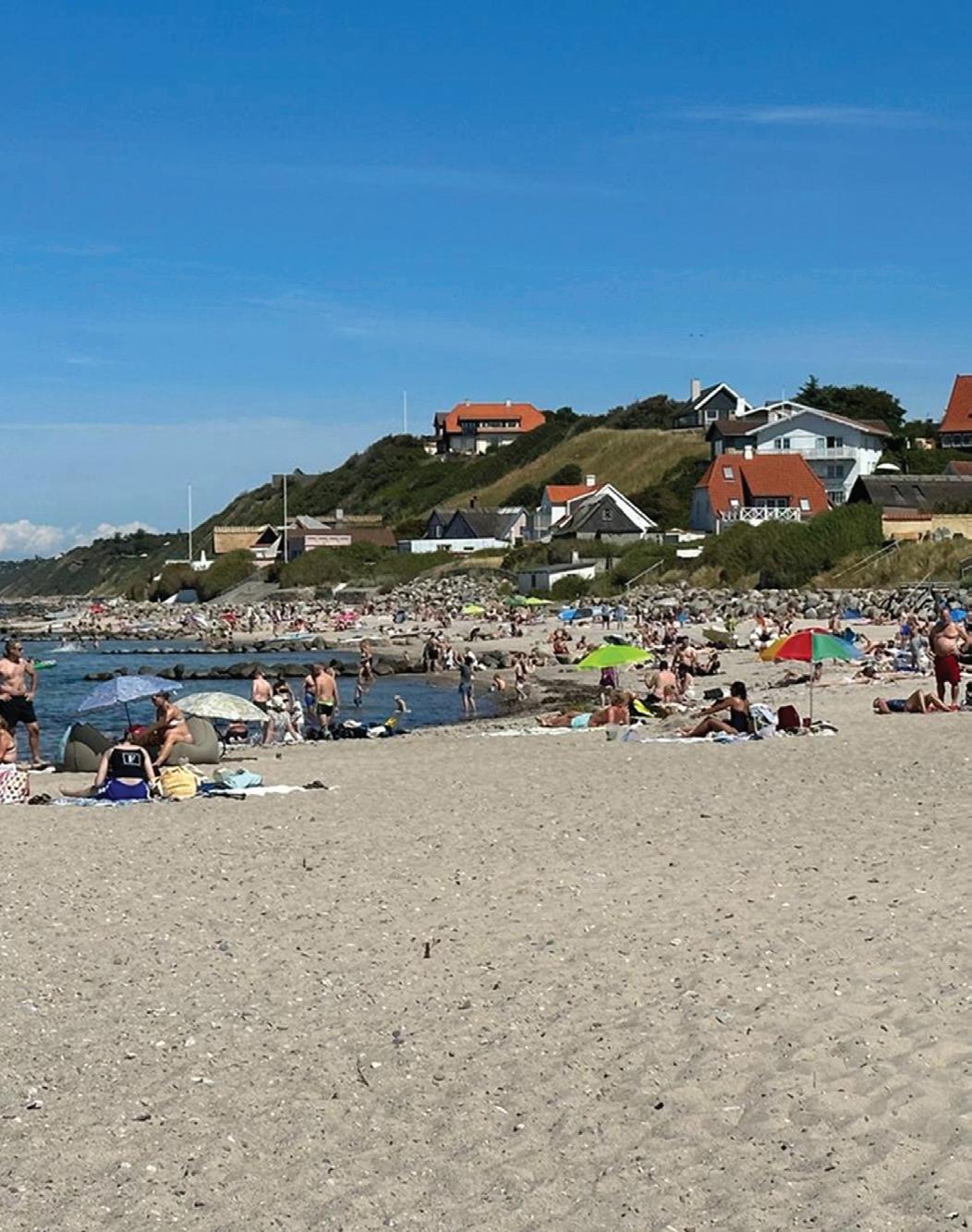
Twenty-five lifeguards gathered at the water’s edge on North Stradbroke Island, ready to take on the challenge of a lifetime. They had travelled from across the globe—Denmark, Canada, the United States, and the United Kingdom—united by a shared commitment to coastal safety.
For many, the journey to Australia began months earlier when ALS Queensland announced the reopening of its International Lifeguard Program for the 2024/25 summer season. Interest in the program surged, with over 100 applications submitted for what was initially a limited number of positions. Recognising the growing demand for skilled lifeguards in remote locations
such as Agnes Water, Townsville, and Cairns, ALS Queensland made the strategic decision to expand the program’s intake to 25 lifeguards.
The program provided rigorous training to ensure each lifeguard met Australian standards. While many quickly adapted to new procedures, one particular challenge stood out—lifeguard board skills. Although proficient in ocean rescue techniques in their home countries, navigating Australia’s powerful surf on a rescue board required a higher level of expertise. Under the guidance of experienced trainers, the recruits refined their skills, building confidence as they tackled the rolling waves. Another essential component of training was

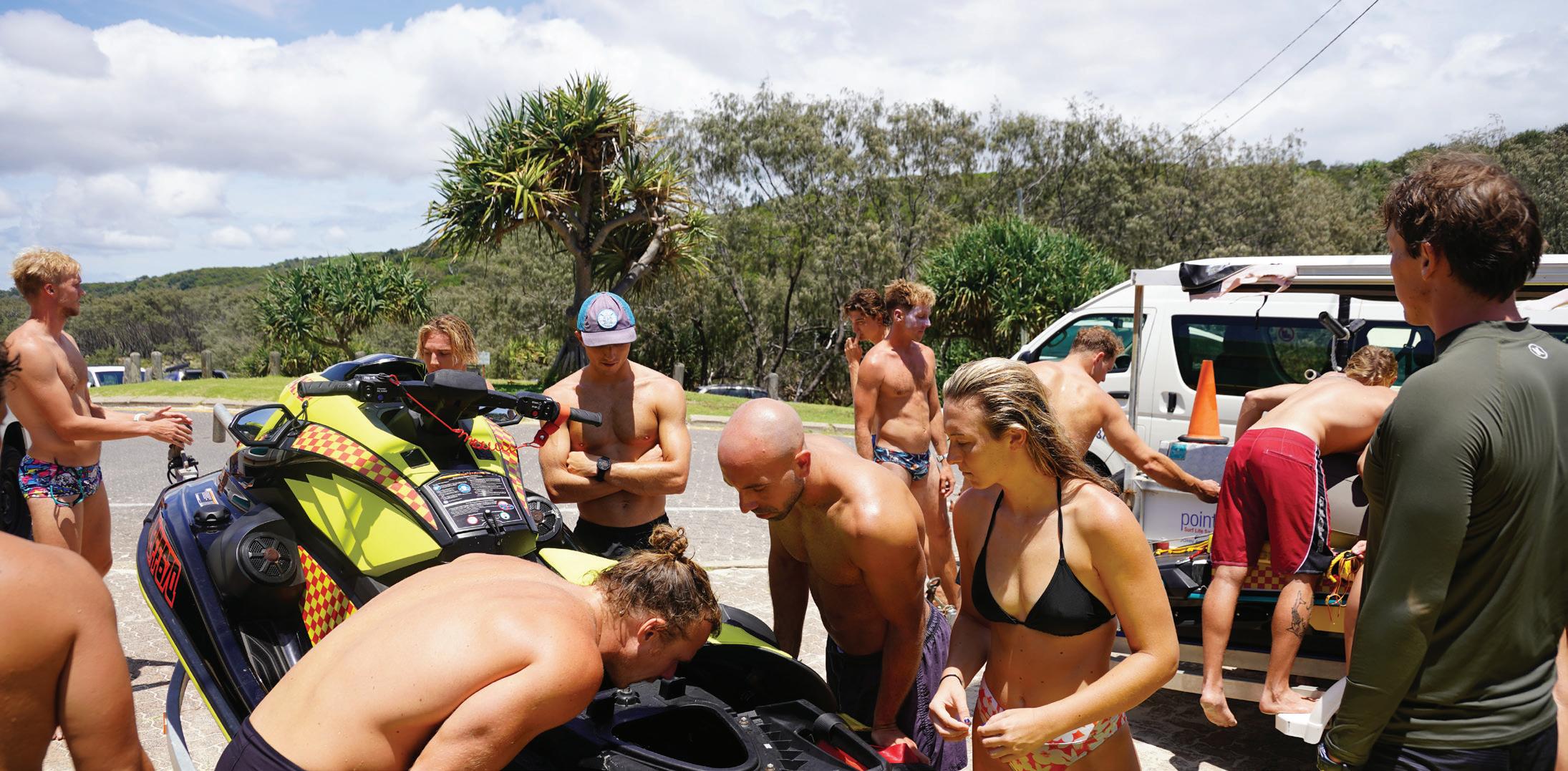
Rescue Water Craft operations and techniques. By the program’s conclusion, every recruit had developed a deep respect for the power of the ocean and the critical equipment they would rely on to save lives.
Once training was complete, the lifeguards dispersed across Queensland’s coastline, heading to their assigned regions—Cairns, Townsville, Rainbow Beach, Noosa, Sunshine Coast, Bribie Island, Moreton Island, and North Stradbroke Island itself. Each destination presented its own challenges, from the strong currents of the Sunshine Coast to the isolated stretches of Moreton Island. Yet, the international lifeguards embraced their new roles with enthusiasm, ready to apply their training in real-world rescues.
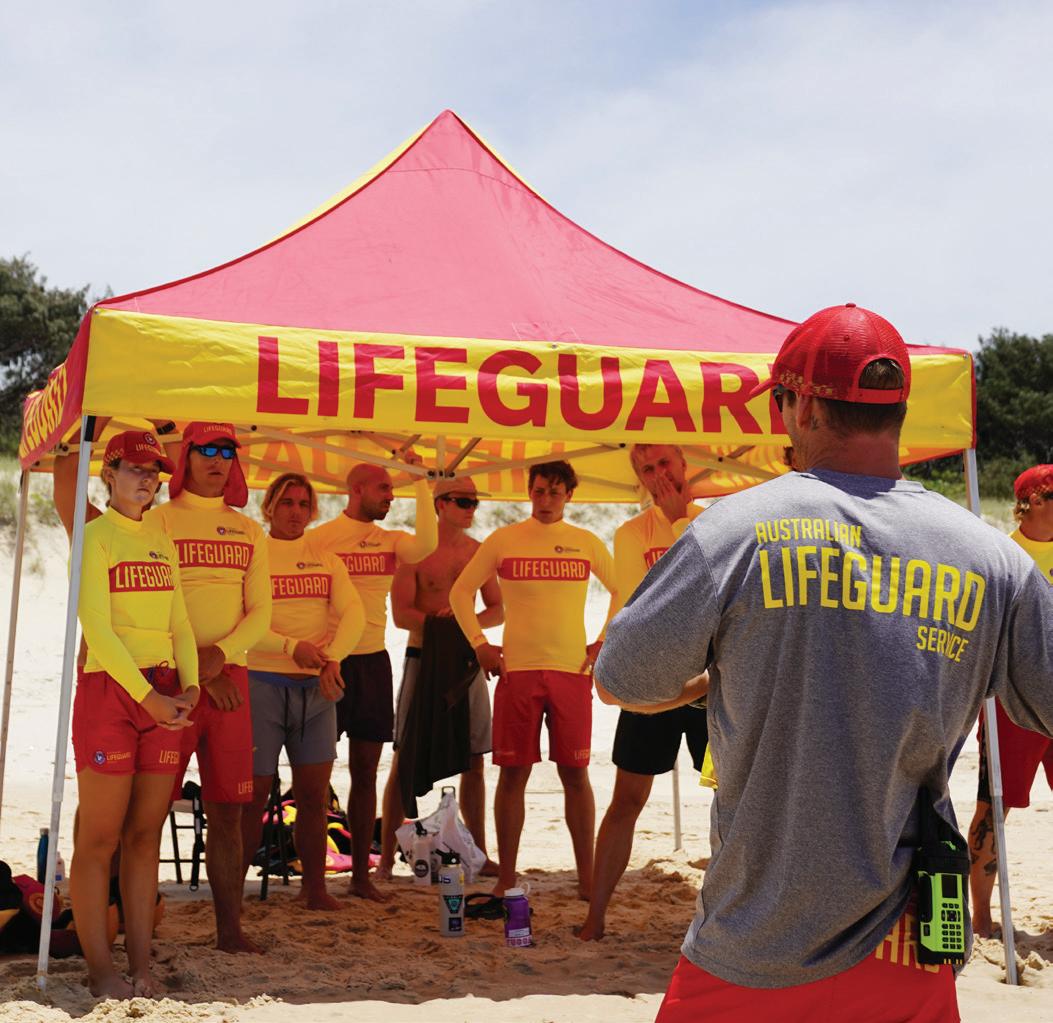
The 2024/25 season proved the immense value of the International Lifeguard Program. ALS Queensland is already planning the 2025/26 intake, aiming to refine training methods and enhance the experience by hosting it again at Point Lookout, North Stradbroke Island. This location offers cost-effective accommodations and an ideal training ground for vital rescue skills.
As another season ends, one thing is clear—the program is more than a recruitment initiative. It fosters a global exchange of knowledge, skill, and passion for lifesaving. Thanks to these dedicated lifeguards, Queensland’s beaches remain safer, and international lifesaving bonds continue to strengthen.
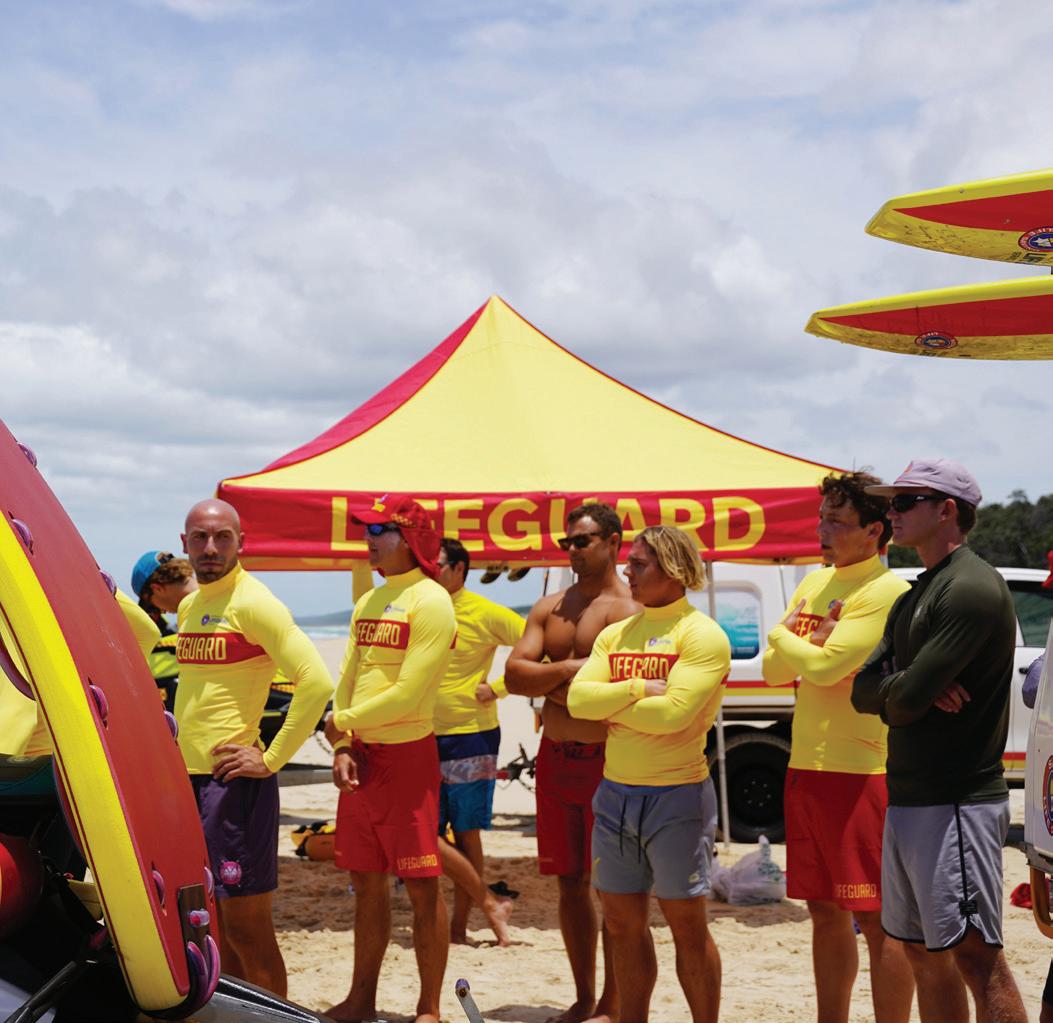
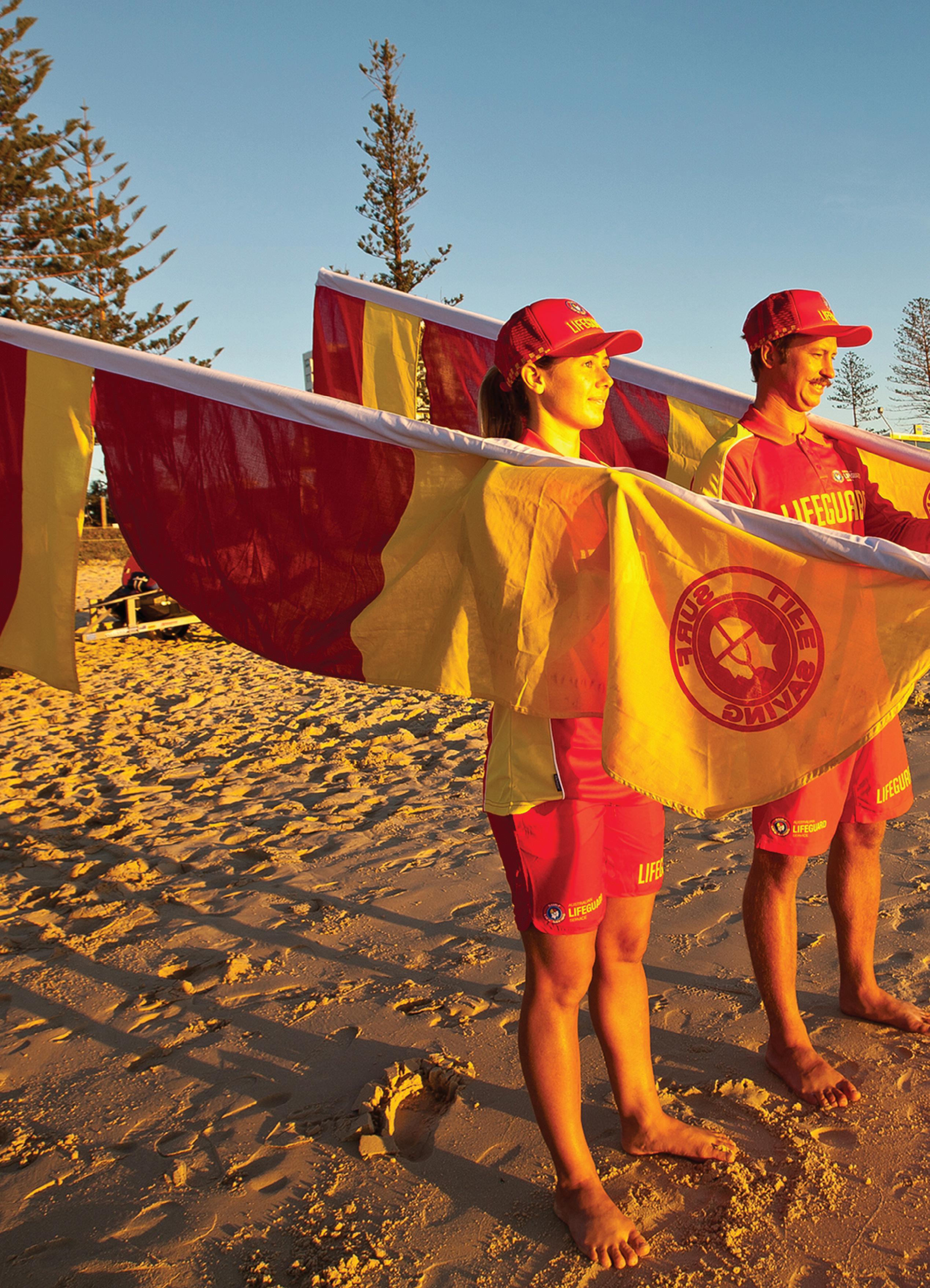

Nick Marshall, Surf Life Physio
Lifeguards need strength, flexibility, endurance, and quick reaction times to perform at their best. Here are five simple exercises that can be done at work to keep the body loose, strong, and prepared for action.
1. Dynamic Arm Circles (Shoulder Mobility & WarmUp)
Why? Lifeguards rely on strong, mobile shoulders for swimming and rescues. This exercise improves flexibility and blood flow to the shoulder joints.
How to Do It:
• Stand tall with arms extended out to the sides.
• Rotate arms forward in small circles, gradually making them bigger.
• After 15 seconds, switch direction and repeat for another 15 seconds.
2. Squat to Stand (Full-Body Mobility & Strength)
Why? This move increases flexibility in the hips, hamstrings, and ankles while activating the legs and core—perfect for quick reactions and movement on uneven terrain.
How to Do It:
• Stand with feet shoulder-width apart.
• Bend at the waist and reach down to touch your toes (or as close as possible).
• Drop into a deep squat, lifting your chest while keeping heels on the ground.
• Stand back up and repeat 10 times.
Tip: Move slowly and focus on good posture to maximize mobility.
Tip: Try slow, controlled movements and keep your core engaged.
Why? Lunges strengthen the legs and core while improving balance, which is crucial for running on sand or uneven surfaces.
How to Do It:
• Take a big step forward with one leg, lowering your back knee toward the ground.
• Push off the front foot to bring the back leg forward into the next lunge.
• Continue for 10 lunges per leg.
Tip: Engage your core and avoid jerky movements
Why? Strong feet and ankles help with running, swimming, and stability on slippery or uneven surfaces.
How to Do It:
• Stand with feet hip-width apart.
• Slowly rise onto your toes, hold for 2 seconds, then lower back down.
• Repeat 15–20 times.
4. Standing Torso Twists (Core Activation & Spine Mobility)
Why? Quick side-to-side movements are key in lifeguarding. This exercise keeps the core engaged and the spine flexible.
How to Do It:
• Stand tall with feet hip-width apart.
• Place hands on hips or extend arms out in front.
• Twist your torso side to side in a controlled motion.
• Repeat 20 times (10 per side).
Tip: For added difficulty, try single-leg heel raises.
Performing these 5 exercises every hour or during breaks helps lifeguards stay loose, strong, and ready for any emergency. Incorporate them into your shift for peak performance!
Nick Marshall, Surf Life Physio

Mindfulness is a powerful tool that high-performance athletes use to recover, refocus, and stay mentally sharp. As a lifeguard, practicing mindfulness between shifts can help you reduce stress, restore energy, and stay alert for your next watch. This simple 5–10 minute session is designed to help you reset during your breaks.
1. Find a Quiet Space (1 Minute)
• Sit in a comfortable position, either in a chair with feet flat on the ground or cross-legged on the floor.
• If possible, find a shaded or quiet area where you won’t be disturbed.
• Close your eyes or soften your gaze.
2. Focus on Your Breath (2 Minutes)
• Take a deep breath in through your nose, hold for a moment, then exhale slowly through your mouth.
• Repeat this for a few breaths, paying attention to the feeling of air entering and leaving your body.
• Let your breathing find a natural, steady rhythm.
3. Body Scan Relaxation (3 Minutes)
• Bring your attention to different parts of your body, starting from your toes and moving up to your head.
• Notice any tension or discomfort, and as you exhale, imagine releasing that tension.
• If you feel any tightness in your shoulders, hands, or legs, let them soften.
4. Mental Reset with Visualisation (2 Minutes)
• Picture a calm and peaceful place—this could be a quiet beach, a serene forest, or even the water beneath you.
• Imagine yourself feeling light, refreshed, and completely relaxed.
• If any stressful thoughts arise, acknowledge them, and let them drift away like waves on the shore.
5. Set an Intention for the Rest of Your Shift (1 Minute)
• Before opening your eyes, take a moment to set a simple intention:
“I will stay focused and alert.”
“I will remain calm and confident in any situation.”
“I will be present and ready to help.”
• Slowly bring awareness back to your surroundings and gently open your eyes.
2. Breath out through your mouth for twice as long
3. Practice and repeat as needed
Breathing exercises calm the nervous system and reduce stress. Body scanning helps release tension from physical exertion.
Visualisation refreshes the mind and prevents mental fatigue.
Setting an intention keeps you mentally sharp and prepared.
By practicing this short mindfulness session between shifts, you’ll feel more refreshed, focused, and ready to perform at your best when it matters most.
Dr Jaz Lawes (SLSA) and Dr Sam Fien (Central Queensland University)

Exposure to trauma is inherent in most emergency response roles. Emergency responders are also known to experience greater levels of mental distress than the general population, yet previous research into the mental health of first responders and emergency service personnel did not consider the unique context of lifesaving personnel (lifeguards and surf lifesavers). As emergency responders, lifesaving personnel are at risk of being exposed to potentially traumatic events (PTEs) including major rescues, drowning deaths, suicides, and other traumatic injuries. This places lifesaving personnel at greater risk of developing mental health concerns compared to the general population. SLSA is dedicated to ensuring the safety of our
members and to improving our understanding of member health and wellbeing. SLSA’s Mental Health Project is conducted in partnership with several universities and is the first to explore the mental health of Australian lifeguards and surf lifesavers. Our research has shown that stigma, especially shame, moderates the relationship between trauma exposure and stress symptoms where shame exacerbates the stress felt after a traumatic incident. However, the social infrastructure within the Australian Lifeguards Services (ALS) and Surf Life Saving (SLS) also provides significant support that is protective, safeguarding lifesaving personnel against impacts of trauma and stress.
A recent workshop assembled representatives from all around the country and New Zealand to begin the process of developing a national framework with guiding principles and an action plan for lifesaving organisations to better support lifeguards and surf lifesavers. The framework intends to:
• Develop a shared vision relating to mental health and wellbeing to guide future action
• Provide a nationally directed, systematic approach
• Ensure consistency across the states and territory
• Act as a best practice/minimum standards model
• Improve members’ quality of life and acknowledge the mental health impacts of frontline service roles
Lifeguards and surf lifesavers are uniquely motivated to protect the community but also to promote safe recreation in Australia’s incredible aquatic environments. However, sadly accidents can happen. SLSA is committed to doing everything they can to ensure lifeguards and surf lifesavers maintain a healthy state of mind, while also feeling equipped to embark on challenges and to actively participate in lifesaving activities that, ultimately, save Australian lives.
There are often external signs that suggest that someone may be struggling. The sooner you identify these signs in yourself or others, the sooner you can seek help or provide support.
When you see someone who may be struggling, your natural reaction might be to try and help. However, you might not be sure what exactly you can do. If someone is acting out of character, it could be as simple as checking in with them to see if they need anything or want to talk. It’s not your job to diagnose anyone with a mental health issue.
Should you or anyone you know experience emotional discomfort, please contact friends, family, reach out to your GP or if urgent, phone
Lifeline Australia: 131114
Kids Helpline: 1800 55 1800
Beyondblue: 1300 22 4636
Benestar: 1300 360 364


Surf Life Saving has always been a huge part of my life. I grew up in Brisbane but remember travelling to Maroochydore from a young age and spending many long days at the beach. My family has a long history at Maroochydore so it was inevitable that I would join Maroochydore SLSC. I started in Nippers way back when I was 6 years of age with wade races, board races and basic water safety. As I moved up through the age groups, I developed many awesome friendships and I then took a real liking to the swimming events, which is where my love of competitive swimming really started. There is nothing sweeter than competing for Maroochydore alongside friends and winning Queensland and Australian titles. The highlights would have to be some of the team event wins such as the Australian Taplin Relay and Open Surf Teams plus of course the U19 surf race.
As a 6-year-old Nipper, never in my wildest dreams did I think that one day I would be standing on the starting block at the Olympic Games. Being in Paris with my
team was incredible, and now at 21 years old, I feel I’m only just getting started. But there was a time when my swimming career nearly came to a halt. It was before the Birmingham Commonwealth Games in 2022, where I won the 1500 metres swim. That win nearly didn’t happen for me. In fact, I nearly didn’t even make it into the pool.
Only five weeks beforehand, I was in a hospital bed in Budapest undergoing surgery to remove an invasive melanoma from my back. I was 18, and on my first overseas trip with the Australian Swim Team. I’d had a suspicious looking mole removed from my lower back before I left Australia, and the pathology results came through just before I started competing at the World Championships in Hungary. Suddenly, I was having surgery in a foreign country to remove all cancer cells. It doesn’t get much scarier than that.
With the Commonwealth Games little more than a month away, it was a race to recover in time to get back to training, let alone compete. With the support
of my family, the medical team in Budapest and the Australian Swim team doctors, my recovery was relatively smooth sailing. I think my journey to even get back in the pool is what makes my 1500 metres gold medal swim even more special.

Throughout my years at the beach, and being a part of Surf Life Saving, I thought I was being sun safe. I slathered on sunscreen and covered up as best I could. But here I am, now 21, and a melanoma survivor. That’s a title I never thought I’d have. I am proud to now be Melanoma Institute Australia’s youngest ambassador, working to raise awareness about sun safety amongst teenagers and young Australians.
One Australian is diagnosed with melanoma every 30 minutes, and one person dies from the disease every 6 hours. Alarmingly, melanoma is also the most common cancer impacting 20 to 39-year-old Australians. To reduce this impact, sun safety needs to be part of everyday life, including across sport. It needs to have the same billing as other sport safety measures like fluoro vests for added visibility in the water. If we can protect against sunburn now, we will be protecting young Aussies from developing potentially deadly melanoma in years to come.
It is also vital that everyone knows their skin and seeks medical advice if they notice anything new or changing. That’s how I caught my melanoma early before it spread.
MIA’s national Melanoma March awareness and fundraising campaign involves participants either walking or running at family-friendly events across the country during the month of March. The events
provide a great opportunity for the community to come together to honour lives lost to melanoma and support those affected by the disease. They also spark important conversations around the dangers of tanning and the need for all Aussies to follow the five sun safe rules – seek shade, wear a broad brimmed hat, wraparound sunglasses, and protective clothing, and apply SPF50+ sunscreen. If I can prompt just one young Aussie to protect their skin and help raise funds that go towards reaching zero deaths from melanoma, then I’ll be happy.

My melanoma diagnosis hasn’t stopped me still enjoying our great outdoors, but I do it now with sun safety top of mind. I’m still a proud member of Maroochydore SLSC and hope to be part of the team competing at the Surf Aussies this year. I’ve also got my sights set on representing Australia at the 2025 World Swimming Championships in Singapore and Swimming World cups series later in the year. Life is busy, but it’s good!
Sam Short
Melanoma Institute Australia Ambassador





